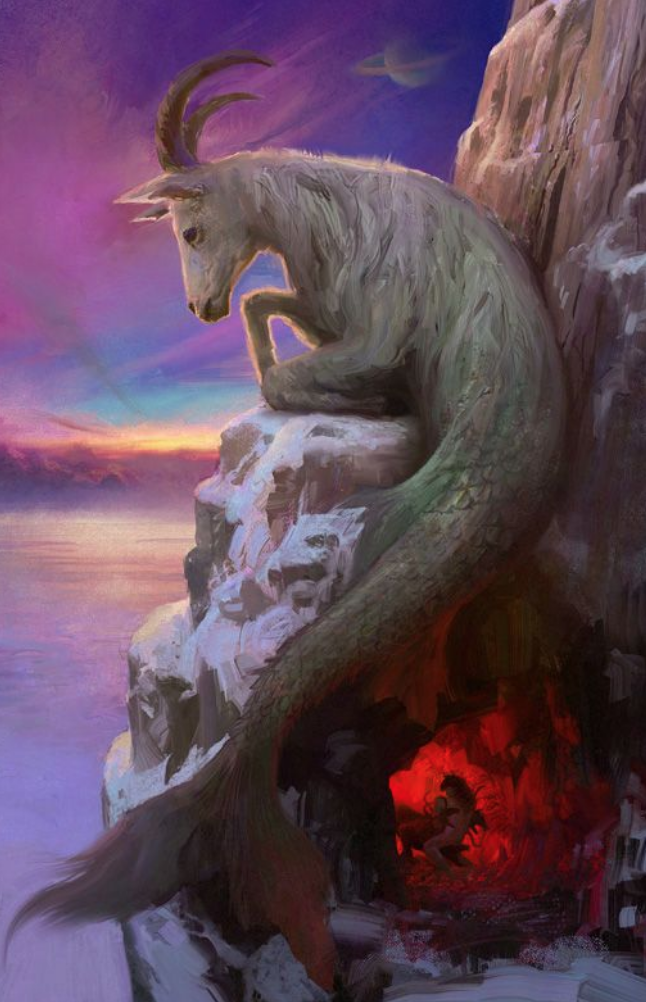

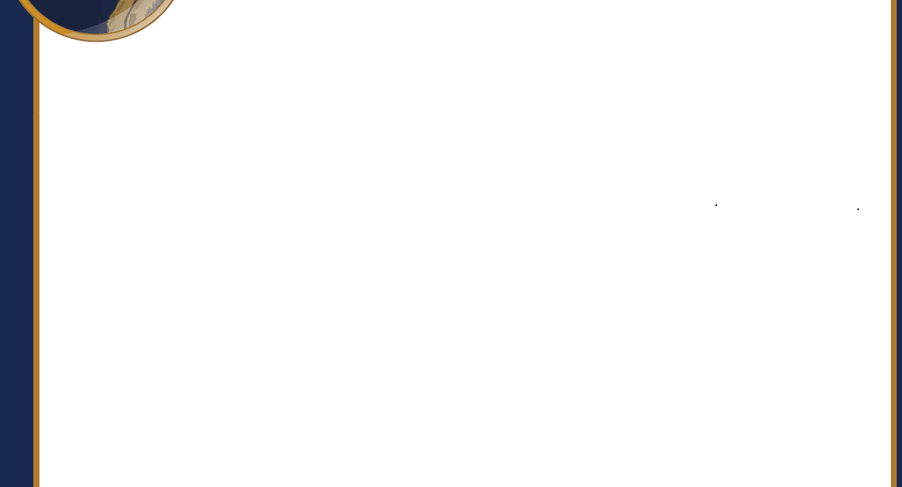

29/30 Dec 2020
© Malvin Artley
|
Topics (linked to paragraphs):
|
|
Happy New Year, Everyone!
And a belated Merry Christmas! At least, we hope the coming year is happier than this one has been. This letter marks the wrap-up of the solar festivals for 2020, ended by an eclipse and a Great Conjunction, the latter to be lightly covered later in this piece. There is a blog post on it, linked in the discussion, which describes it in more detail. And I can say, without much equivocation, that what we see evolving in front of us worldwide is actually according to an outcome that was deemed desirable for the destiny of the nations, quoted later. More than that, though, this letter is actually a summation of the past five years of various aspects of our evolving world from our investigations. 2020 will be remembered as the year many people would prefer to forget. But in other ways, it will be marked as the year that was the beginning of the end of the old order, much as the vested interests would like to rebrand it as something new and necessary in order to keep the status quo going. We’ll cover that more here, later. But we should not forget this year, much as many of us would like to put it behind us, because it will be seen in hindsight as the year where our eyes began to open. It will also be noted in history as a decisive year in the annals of geopolitics, marking the solid emergence of a different world order, much as the vested interests in the West would like to prevent it. We’ll cover those vested interests here in a little more detail, too, because there is a distinct Capricornian, materialistic theme there. But first, we look at local news.
As most readers will be aware, Europe is in the grips of its second wave of COVID infections. Here in Italy, since there was more widespread testing this time, our positive tests topped almost seven times what we had at our peak in March. Due to better handling this time, the hospitals are not overloaded and only certain regions are stressed. Hence, there will be only a brief period of stronger restrictions from the 24th to the 6th. It doesn’t really bother us here. The restaurants and bars will be closed, but the government is going to reimburse them for their lost business over that period. They are the only businesses that typically operate over that period, except for a few retail stores. Contrast that with the United States, for instance, where the government seems to be at great pains to even manage a meagre 600 dollars of support for the average family, and which will be a one-time payment. By ‘government’, I mean Congress and the Executive. We’ll have more on that later in this piece, too, as the US is the main battleground, along with the UK, for solving the problem of capital and labor. And speaking of the UK, the COVID mess there rivals that of the US in the way it has been (mis)handled, with the polls steadily falling for Boris and the Conservatives. That may change a little now there is a Brexit deal, but in a few months that may be a different story yet again. We’ll have more on that a little later, too.
As for family life, several of my in-laws have caught the bug, and a few of them are having a difficult time shaking it. They are on their way to coming out of it. We know several friends who have had it and a few of those have had a difficult time as well. And yes, most of those having troubles are elderly. This isn’t like the flu, where one might have it for a week and then shake it off. Due to its biological effects, it can do odd things to one’s system. But there is no panic here. People put on the mask, get on with their business, and otherwise life here would appear to be normal. Perhaps it is the 6th ray soul of Italy, producing a devotion to family and community, a unity of ideals in times of stress – that combined with the masculine government, which throughout this epidemic here has been proactive and has gained support throughout the year for its handling of it. PM Conte’s esteem in the public eye has risen, whereas the populist ex-leader, Salvini, has lost support in the polls. The number of positive test results here (That’s for COVID, not cricket. Actually, we do have cricket squads here, bolstered by large numbers of Indian and Pakistani expats.) is steadily falling, a quarter of what it was just over a month ago. The brief period of restrictions is hoped to keep the numbers low in the coming weeks.
 Talk of the pandemic, though, brings up some considerations for Capricorn, because Capricorn in mundane astrology represents crystallization, age and materialism when it is found in the personalities of nations.[1] But if we take a step back and look, where do we find the crystallization, age and materialism most marked in the world? Materialism itself is most marked in the West, though it has risen in the East in recent years. The West has handled the pandemic worse than the East, particularly in the US and UK. The East has its old staid remnants of culture, as in India, for instance, with its caste system. But the main thing we are looking at here is where the old, status quo in terms of a ruling class has been outlived and where it is being challenged, and we find that in the Gulf monarchies, which Iran challenges, the old capitalistic order, which the West maintains, the remnants of imperialism, which many nations have pursued and the dying Piscean Age, with its emphasis on conformity, adherence to ideals, its stratified social set and emphasis on the dominance of the heart in preference to the head. In reference to the latter, one’s sense of or demands of loyalty have often overcome common sense and peoples’ greater good. With that in mind, what does Capricorn represent to us? This will lead to a larger point in a bit.
Talk of the pandemic, though, brings up some considerations for Capricorn, because Capricorn in mundane astrology represents crystallization, age and materialism when it is found in the personalities of nations.[1] But if we take a step back and look, where do we find the crystallization, age and materialism most marked in the world? Materialism itself is most marked in the West, though it has risen in the East in recent years. The West has handled the pandemic worse than the East, particularly in the US and UK. The East has its old staid remnants of culture, as in India, for instance, with its caste system. But the main thing we are looking at here is where the old, status quo in terms of a ruling class has been outlived and where it is being challenged, and we find that in the Gulf monarchies, which Iran challenges, the old capitalistic order, which the West maintains, the remnants of imperialism, which many nations have pursued and the dying Piscean Age, with its emphasis on conformity, adherence to ideals, its stratified social set and emphasis on the dominance of the heart in preference to the head. In reference to the latter, one’s sense of or demands of loyalty have often overcome common sense and peoples’ greater good. With that in mind, what does Capricorn represent to us? This will lead to a larger point in a bit.
Capricorn can express all that is best and worst in humanity.[2] In that sense, it represents extremes, either of high spiritual attainment or of gross materialism. The latter, in this Christmas season, is portrayed for us in the character of Scrooge in A Christmas Carol, by Charles Dickens, with Scrooge described as, “…a squeezing, wrenching, grasping, scraping, clutching, covetous, old sinner! Hard and sharp as flint,…secret, and self-contained, and solitary as an oyster." This is Saturnian Capricorn at its hardest and basest. It is the stereotypical image we have of the banker set. This represents the ambition of Saturn turned solely toward material gain and security, at the expense of everyone else – or if to the benefit of someone else, only to effect greater gains for the Capricorn in the long run. Capricorn has been called the most material of all the signs.[3]
Capricorn can also represent spiritual ambition, ambition turned toward the attainment of some spiritual goal. This is not its higher expression, as it can be just as selfish as the material ambition and in some cases, even more damaging in terms of karma. Saturn rules this sign, both in the orthodox and esoterically. As such the lower expressions of Capricorn can accumulate quite a bit of earthbound karma, Saturn ruling karma, in that the selfishness expressed in that mode is solely to advance the Capricorn. The same can be true of spiritual ambition. Saturn expresses the third and fifth rays, the third via Saturn, and as such can display quite a manipulative character. The Capricorn always knows which side of the bread to put the butter on, as well as where to get the butter, to use the vernacular. The ambitious side of Capricorn expresses the motto, “And the Word said: Let ambition rule and let the door stand wide.” For worldly Capricorn, we have:
“Ambition urges him on from life to life until he has discovered the worthlessness of all earthly gratification. Gradually then spiritual ambition and a desire for liberation take the place of worldly ambition, and become an impelling impulse, until finally the moment arrives when a true sense of reality supersedes both earthly and spiritual ambition. The [wo]man can then say with truth "Lost am I in light supernal, yet on that light I turn my back." F[rom thereon] there remains now no goal but service.”[4]
 Climbing the Capricornian mountain: The preceding quote brings us to the more esoteric side of Capricorn, wherein one enters the bodhisattva path unreservedly and devotes oneself to service, meaning the uplifting of humanity to enlightenment. Referring to the Sagittarius letter in the esoteric discussion, we saw the archer on the horse, applying one-pointed meditative techniques toward the attainment of spiritual goals, but outside of the ‘straight and narrow’ path, instead plying the fields and plains, the mountains looming in the distance, beckoning, until all other avenues are either closed or exhausted. Then, the archer reaches the base of a mountain – ‘base’ being the operative word – and starts getting in tune to the straight and narrow, eyeing the narrow path straight up to the mountaintop. This is the final goal, at least for that soul cycle. Leaving the horse behind, the archer also leaves behind the arrows as well, as they are not needed climbing up the mountain, the final goal clearly in sight, and would otherwise pose a hindrance. The archer becomes the alpinista and starts to climb upward. There is much in the way of symbolism here, as this period leads one finally to the first true realization of the space-like nature of reality, wherein the true nature of one’s existence is finally revealed, that realization to be had upon the mountaintop, in the clear cool air, ‘on top of the world’, in a manner of speaking. That realization is indicated in the bold highlighting in the quote preceding.
Climbing the Capricornian mountain: The preceding quote brings us to the more esoteric side of Capricorn, wherein one enters the bodhisattva path unreservedly and devotes oneself to service, meaning the uplifting of humanity to enlightenment. Referring to the Sagittarius letter in the esoteric discussion, we saw the archer on the horse, applying one-pointed meditative techniques toward the attainment of spiritual goals, but outside of the ‘straight and narrow’ path, instead plying the fields and plains, the mountains looming in the distance, beckoning, until all other avenues are either closed or exhausted. Then, the archer reaches the base of a mountain – ‘base’ being the operative word – and starts getting in tune to the straight and narrow, eyeing the narrow path straight up to the mountaintop. This is the final goal, at least for that soul cycle. Leaving the horse behind, the archer also leaves behind the arrows as well, as they are not needed climbing up the mountain, the final goal clearly in sight, and would otherwise pose a hindrance. The archer becomes the alpinista and starts to climb upward. There is much in the way of symbolism here, as this period leads one finally to the first true realization of the space-like nature of reality, wherein the true nature of one’s existence is finally revealed, that realization to be had upon the mountaintop, in the clear cool air, ‘on top of the world’, in a manner of speaking. That realization is indicated in the bold highlighting in the quote preceding.
What is being described in the preceding paragraph is the course of kundalini rising up the central channel of the etheric spinal column, from the ‘base’ (chakra) to the apex (the crown chakra and beyond). There are major chakras above the head. Those are traversed in the final two signs, archetypally.
In the shamata diagram, the Capricorn phase begins with the monk seated at the base of the mountain, thereafter rising and climbing through the various pathways (determined by the terrain (karma) of the mountain. There are places of rest along the way (the major chakras). The mountain itself represents Capricorn and the ultimate earthy state, the rocky and steep nature of the mountain pathway indicating the last obstacles to the attainment of pure joy, or bliss. The mind at this point in one’s practice is very clear and purified. No obstructing thought can interfere with the path upward and the rainbow bridge (antahkarana) can afterward be traversed back and forth at will. Capricorn represents the final linking and clearing of the antahkarana, or rainbow bridge. Though the path upwards is hard at first, the legs not used to climbing, finally the apex is achieved at the crown of the head (summit of the mountain, the body represented by the mountain).
From the mountaintop, everything is seen in absolute clarity, in the supernal light of the higher Self. It is an experience that transforms the person into something more – the spirit at one and in constant communication with the brain consciousness (waking consciousness). The mind from this point onwards becomes solely the vehicle wherein the subtle realms are explored and traversed. The bodhisattva is now an initiate, and the first clear vision – a true intuition – of the local cosmos is received, as well as the first experience of the monad, one’s ultimate essence. The monad holds the keys to the universe, and is in itself universal. The transfiguration thus experienced and locked into place, there is no other path to travel than back into the world (base of the mountain), thereafter to serve in selflessness. An Arya being now walks the Earth, no longer just a human being.
The third Path: Capricorn marks the beginning of the 3rd path in Buddhism, ‘The Very Joyous’, described as follows:
The first direct realization of emptiness (the View, or ultimate truth) [is attained]. One rejoices at realizing this aspect of the truth. Ultimate bodhichitta [active kundalini] arises for the first time, and the burning desire to see all beings attain this state arises in fullness. The outlook is forever changed—i.e., the personality is transfigured. Predispositions to corrupted ethics are so eliminated that they will never arise again. The bodhisattva is able to freely give away everything and without any thought of praise or reward for themselves. The 3rd path, the path of seeing, is engaged.[5]
 This 3rd path, of ‘Seeing’, suggests the true 3rd eye – the integrated and synthetic functioning of the three major head centers (alta major, ajna and crown) – is thereafter fully engaged at will. Spiritual perception is now available to the Arya being at all times. The Arya being is also known in Christianity as ‘the rich young man’, in Capricorn, and represents the first of several ultimate human attainments (initiations), if we can use the word ‘ultimate’ more than once. With Capricorn, we have the attainment of the ‘rich young man’, replete with newfound spiritual wisdom. But therein is a conundrum: One cannot be attached to such wisdom, seeing it is ‘my attainment’ and actually be of true, selfless service. The attachment to ‘riches’ must be abandoned – “Yet on that light I turn my back”. Hence, at the third path, the strong impulse to give all away is encountered, and the rich young man recedes from the world and from fame and begins to pass through ‘the eye of the needle’, which the third eye used in service represents. If there is ego, the third eye becomes ineffective. There are two more signs to consider after this, and two more paths, after which the initiate becomes more than human – superhuman, in fact. Lives totally dedicated to service and salvation of all sentient beings thereby become possible and in fact, imperative. Capricorn thus marks an ultimate goal as well as the start of a new path in the long history of human evolution. With these points in mind, we move on the a consideration of the full moon and, coming down from our esoteric mountain, to take a look at the world as it is evolving. As it turns out, this is to mark a transitional year.
This 3rd path, of ‘Seeing’, suggests the true 3rd eye – the integrated and synthetic functioning of the three major head centers (alta major, ajna and crown) – is thereafter fully engaged at will. Spiritual perception is now available to the Arya being at all times. The Arya being is also known in Christianity as ‘the rich young man’, in Capricorn, and represents the first of several ultimate human attainments (initiations), if we can use the word ‘ultimate’ more than once. With Capricorn, we have the attainment of the ‘rich young man’, replete with newfound spiritual wisdom. But therein is a conundrum: One cannot be attached to such wisdom, seeing it is ‘my attainment’ and actually be of true, selfless service. The attachment to ‘riches’ must be abandoned – “Yet on that light I turn my back”. Hence, at the third path, the strong impulse to give all away is encountered, and the rich young man recedes from the world and from fame and begins to pass through ‘the eye of the needle’, which the third eye used in service represents. If there is ego, the third eye becomes ineffective. There are two more signs to consider after this, and two more paths, after which the initiate becomes more than human – superhuman, in fact. Lives totally dedicated to service and salvation of all sentient beings thereby become possible and in fact, imperative. Capricorn thus marks an ultimate goal as well as the start of a new path in the long history of human evolution. With these points in mind, we move on the a consideration of the full moon and, coming down from our esoteric mountain, to take a look at the world as it is evolving. As it turns out, this is to mark a transitional year.
The full moon takes place on 30 Dec 2020 at 3:28 UT (2:28 PM AEDT). The full moon axis is at 8°53’ Capricorn/Cancer. The main aspect is a trine between the Sun and Uranus, marking a more progressive turn of events for the month and the start of the year, measured in modern terms. That will not be so much in evidence in the West as it will in the East. The United States, for instance, is still torn from the election and growing domestic concerns, and we see growing concerns in Europe and Australia. Britain will be crashing out of the EU the next day, with the smell of a trade deal with the EU. And the financial bailout of Italy and Spain for the pandemic looks to be headed for trouble, which will further inflame tensions within the EU. The East, on the other hand, is moving on and will see growth in GDP this year, as well as being essentially free of the coronavirus, or becoming so. With these latter points in mind, we are not simply looking at the end of 2020. What we are seeing evolve is the end of an era and the emergence of a transitional world order, one which will be marked by multipolarity, the emergence of strong regional powers and the ebb of Western hegemony, including the end of any notions of a possible resurgence of imperialism within the old imperial orders. The latter includes virtually all the Western European nations and the United States. The Eastern nations, including Russia, do not appear to be imperialistic now, much as we might be told they are. In considering these points, a rather interesting timeline emerges, which will give us clues to the future.
Certain key events: Every century has its important years of note. These generally fall on the turn of each century, preceded by a summation in the few years preceding, then at the 25th year, and then at the 75th year. There is also a lesser impulse that comes at the 15th year of each century, and then every 15 years thereafter, ending with the 10 years before the turn of each century, leading to the summary years before the turn of the next century. These figures all represent subjective (ray) cycles, with the 100-year cycle being the determinative element. The latter is the lesser cycle of the 1st ray. Each decade also represents a further division of the 1st ray cycle. Although the lesser cycles in each century do not necessarily coincide with their ‘parent’ ray cycles, they are representative and suggestive. When these cycles coincide, as in the 30th, 50th, 60th, 75th and 90th years, we usually see important and determinative events unfold that shape our social evolution. These have become quite marked in the last few centuries, as our mental comprehension and human attainment has grown. For the 20th century we have the following, as an indication, keeping in mind these are median and peak dates. The same can be done for the two centuries preceding the 20th century:
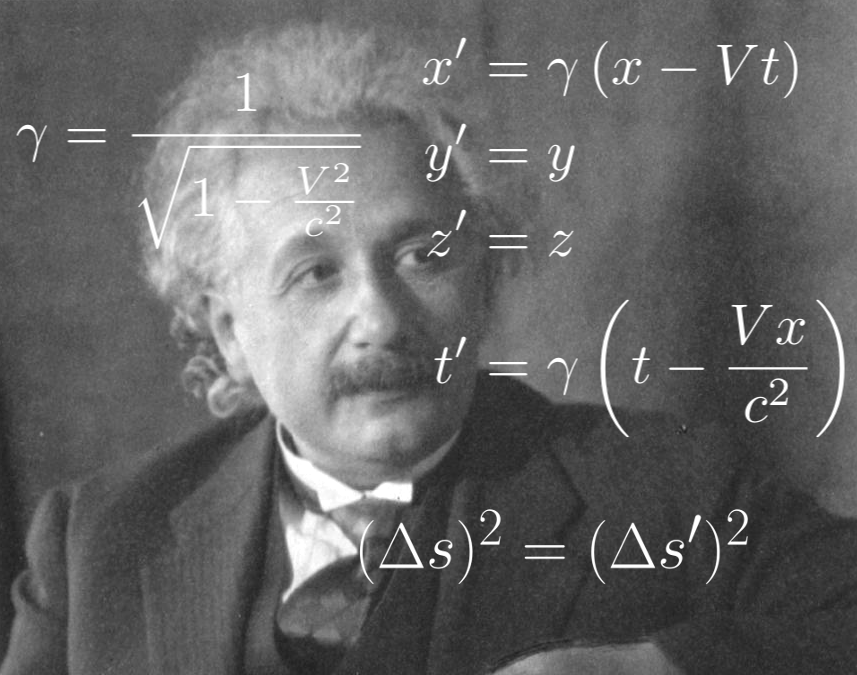 1900: Einstein and the Special Theory of Relativity (all is energy, matter and energy are one), the Curies discover radioactivity, the first powered flights, the first radio receiver, the first mass-produced cars (the production line), the Panama Canal, the 1st Russian Revolution (Russia began to reform itself), the New Imperialism (large colonizations by Western powers, especially in Africa and Asia). This marked a liberation for humanity.
1900: Einstein and the Special Theory of Relativity (all is energy, matter and energy are one), the Curies discover radioactivity, the first powered flights, the first radio receiver, the first mass-produced cars (the production line), the Panama Canal, the 1st Russian Revolution (Russia began to reform itself), the New Imperialism (large colonizations by Western powers, especially in Africa and Asia). This marked a liberation for humanity.- 1915: WWI, leading to the 2nd Russian Revolution and the birth of the first socialist state. The Theory of General Relativity, which revolutionized science. The end of WWI also led to the end of the German colonial empire, Ottoman Empire, Austria-Hungary and the Russian Empire, reorganization of European states, territorial boundaries, and the creation of several new European states and territorial entities: Austria, Czechoslovakia, Estonia, Finland, Free City of Danzig, Hungary, Latvia, Lithuania, Poland, Saar, Ukraine, and Yugoslavia.
- 1925: The dispensation from Alice Bailey (1922, with her magnum opus, A Treatise on Cosmic Fire in 1925), Helena Roerich (books started appearing in 1923) and the Temple of the People in Halcyon, CA (1925, Teachings of the Temple). The first feature-length motion picture with a sound track, Robert Goddard and his rockets, the first working mechanical TV, electrical recording process for vinyl records (more lifelike sound), frozen foods, the Roaring ‘20s, the rise of Fascism and Nazism. The Scopes Monkey Trial. Biodynamic agriculture. The birth of quantum physics and the wave-particle duality.
- 1930: The Great Depression, Mohandas Ghandi and the Indian Independence Movement, Japan invades Manchuria, Pluto was discovered.
- 1945: The end of WWII and the start of Pax Americana. The founding of the UN, the release of atomic energy, the founding of the NATO, Bretton-Woods, the liberation of the world from Fascism and Nazism.
- 1950: McCarthyism, the Korean War, the Cold War, the birth of the People’s Republic of China (1949), the birth of solid state electronics, without which none of our modern tech would be possible.
- 1960: Communist takeover of Cuba (1959), the space race, beginning of the American build-up in Vietnam, the start of the decolonization of Africa en masse. ‘The pill’ was released, Yuri Gagarin was the first human in space (1961), the first working laser.
- 1975: Détente between the Soviets and the US, the rise of fiat currencies, Nixon resigns, the New Age Movement, energy crises and stagflation. China opens to the US. The last years of Mao Tse Tung. The first personal computers began to appear and Apple was born.
- 1990: The collapse of the Soviet Union and the gutting of Russia, the ‘end of history’, America as the single world hegemon, the first Gulf War, the breakup of Yugoslavia, the rise of our current neoliberalism, the spread of the NATO to the east, the release of Nelson Mandela, the end of the Cold War, German reunification, the advent of the internet, the first commercial cell phones, CERN, personal computers domestically connected to the World Wide Web. The start of the surveillance state.
What follows on from this will not be found in the mainstream news to any large extent. If you get your news primarily from mainstream sources, the points to be examined from here to the end of this letter will seem off the mark, conspiratorial, just fanciful, pro-____ (insert country), or anti-Western. On the other hand, once one begins to read news from sources who actually live and work in the nations to be mentioned, who know and love the cultures, meaning the general populace, and who study such matters deeply, a different picture begins to emerge about our world, one which very often runs counter to the narratives and ‘experts’ we see paraded in front of us on our ‘infotainment news’ networks. For myself, if I was a young man with means and unattached, I would go to these places and experience the people and the cultures for some months at a time if I could. Sadly, those days for me are long gone, though I have managed to experience expat communities of several of the countries to be mentioned. So, it’s for each of us to decide: What is true, what is propaganda, and what is just nonsense? Experience is usually a pretty good guide.
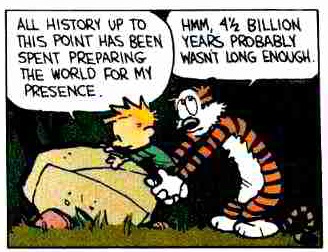 The End of History?: These last ten years of the 20th century set the stage for the current century, with the internet and instant communications anywhere in the world possible from then, our current Ponzi scheme which our elites like to call ‘the economy’, China’s sudden growth into a real economy instead of simply being a factory and then – Vladimir Putin. The challenges of this century were set in place then, which bears a look if we are to get a sense of what is to come.
The End of History?: These last ten years of the 20th century set the stage for the current century, with the internet and instant communications anywhere in the world possible from then, our current Ponzi scheme which our elites like to call ‘the economy’, China’s sudden growth into a real economy instead of simply being a factory and then – Vladimir Putin. The challenges of this century were set in place then, which bears a look if we are to get a sense of what is to come.
In 1990 the Soviet Union was collapsing, along with the Warsaw Pact. The two Germanys were looking at reunification. Bush, Sr. along with other European leaders had promised the Russians that there would be no expansion of the NATO even one inch eastward. Other voices in Washington had other ideas. Yeltsin came to power in the summer of 1991 and the Russian Federation was born in December of that year. Privatization of Russian assets and trade liberalization quickly followed under Yeltsin, leading in a few years to a loss of GDP of 50%, upwards of 50% of the population in poverty, a declining birth rate and a rapid decrease in life expectancy. Lawlessness and criminal gangs flourished. Those reforms were encouraged by the IMF and the United States. The Russian Mafia exploded and internationalized. Financial capitalism had come to Russia.
The aim behind the scenes in Washington and London was to balkanize Russia and to strip it of its resources and power. On the other side, Putin stated in an interview a few years ago that the blame for the collapse of Russia was largely at the feet of the Russians, led by Yeltsin, for a variety of reasons, one of the main ones being the divisions that existed within the Russian government itself. The main point he made was that Russia did not stand up for itself against NATO and the US. There was also the souring of relations between the East Central European (ECE) nations and Russia in the ‘90s, which contributed to the NATO expansion. Russia under Yeltsin saw the meteoric rise of the oligarchs, rapid and massive capital flight from Russia, as well as the flight of many of the oligarchs, a significant number of whom now live in London and the US. London was the favoured destination because of its tax secrecy and offshore havens, with London being dubbed “Moscow on the Thames” or “Londongrad”. If ‘Russia’ influenced the Brexit vote, for example, it was more likely these oligarchs than the Russian government. Putin has stated he would rather see a strong EU because it would strengthen trade ties, as well as promoting security. The EU has been looking at tax transparency, which has frightened the capitalist class.
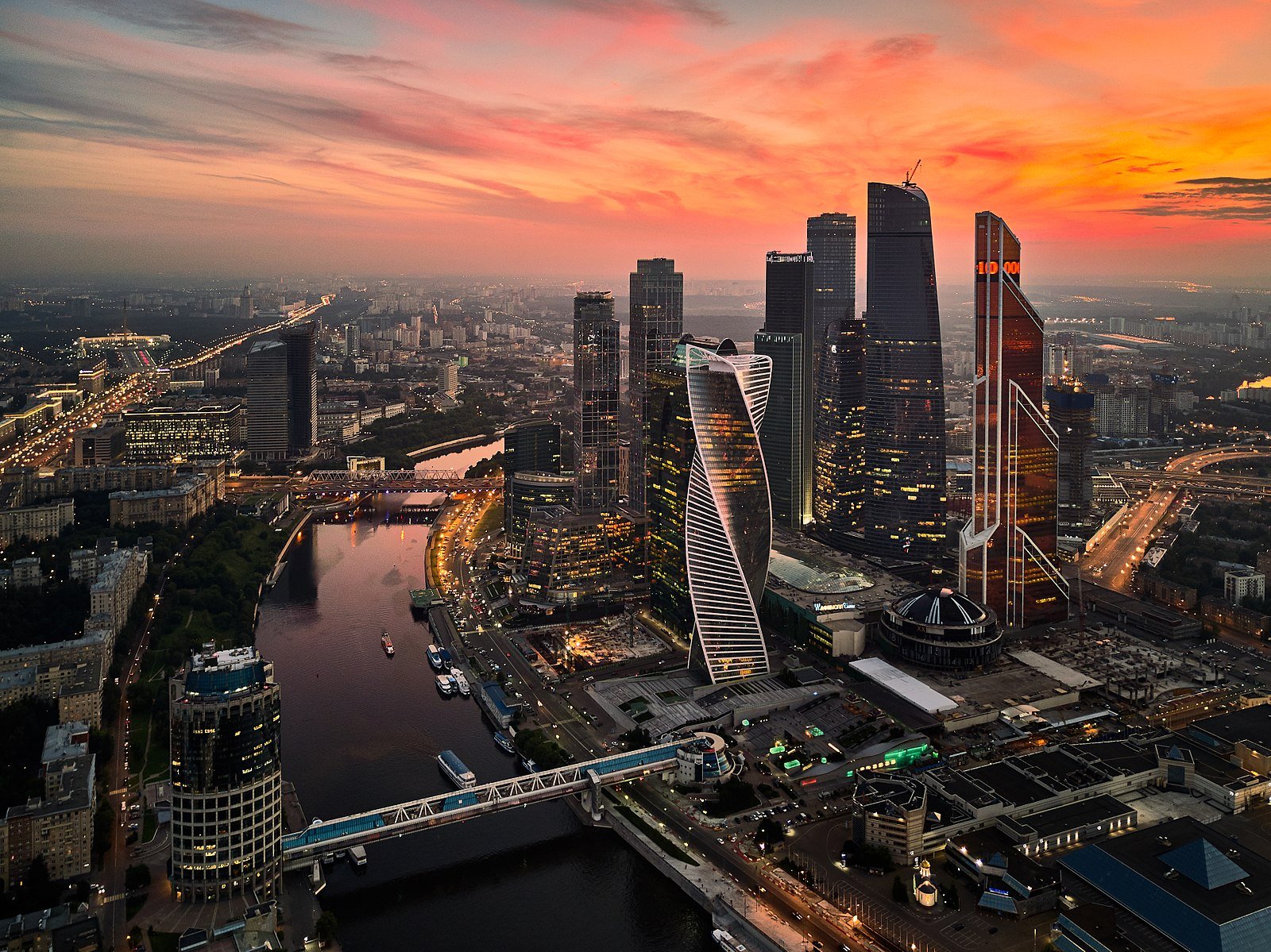 2000 and Russian rebirth: Yeltsin was ousted from leadership at the close of the 20th century and Putin became PM of Russia. Russia began to swiftly change after that. Western readers may not want to see it, but Putin raised Russia from its knees, starting almost immediately after coming to office. Since the turn of the century, Russia has turned itself around, much as it did at the turn of the last century and to the angst of Washington, has reformed its military, banking and industrial sectors, has reduced poverty to 9% at the end of 2019 from almost 50% in the ‘90s, has diversified its economy and is seeing major innovations in key areas. Obama’s comments that Russia doesn’t innovate or make anything that anyone wants are either rank ignorance or propaganda. The police forces have been reformed. Crime in the streets is at a minimum, the oligarchs are slowly being reined in. As one subscriber who works in Russia recently described the scene there today, the difference between the ‘90s and now in Russia is just astounding. The people are generally happy now, they don’t want to ‘Westernize’, remembering what happened in the ‘90s and they see a future for themselves now, whereas previously they experienced dystopia. There is still a ways to go, but progress is being made quickly. These are the facts on the ground in Russia, despite what we are told through our Western media. The young people there still have a yearning to experience the West and think it might be better than what they have, but the grass is always greener until one experiences the other side first-hand. But we return to the 90s, because it is important to understand why we are at our present conundrum in international relations and what faces us in the West in particular. In considering these points we will see what we are leaving behind and what is emerging.
2000 and Russian rebirth: Yeltsin was ousted from leadership at the close of the 20th century and Putin became PM of Russia. Russia began to swiftly change after that. Western readers may not want to see it, but Putin raised Russia from its knees, starting almost immediately after coming to office. Since the turn of the century, Russia has turned itself around, much as it did at the turn of the last century and to the angst of Washington, has reformed its military, banking and industrial sectors, has reduced poverty to 9% at the end of 2019 from almost 50% in the ‘90s, has diversified its economy and is seeing major innovations in key areas. Obama’s comments that Russia doesn’t innovate or make anything that anyone wants are either rank ignorance or propaganda. The police forces have been reformed. Crime in the streets is at a minimum, the oligarchs are slowly being reined in. As one subscriber who works in Russia recently described the scene there today, the difference between the ‘90s and now in Russia is just astounding. The people are generally happy now, they don’t want to ‘Westernize’, remembering what happened in the ‘90s and they see a future for themselves now, whereas previously they experienced dystopia. There is still a ways to go, but progress is being made quickly. These are the facts on the ground in Russia, despite what we are told through our Western media. The young people there still have a yearning to experience the West and think it might be better than what they have, but the grass is always greener until one experiences the other side first-hand. But we return to the 90s, because it is important to understand why we are at our present conundrum in international relations and what faces us in the West in particular. In considering these points we will see what we are leaving behind and what is emerging.
Joined at the hip: The US and UK in many ways appear to be joined at the hip, their destinies running in a kind of parallel direction. There have been several events in recent history that have occurred in parallel between the United States and the UK. We might list them as follows:
- Nixon and ‘Britain’s Dark Ages’ in the early ‘70s. This period saw clashes in both nations, the Nixon shock in 1971 and Heath’s 1971 Industrial Relations Act. These two events may not appear to be related, but they started a trend toward deregulation and overturning the power of labor unions. Both nations were in turmoil at the time – Britain through labor disputes and the US with Vietnam and war debts. The entire world was in recession. More importantly, in both nations this period spelled the end of Keynesian economics. The demise of Keynesianism gave rise to the next pair…
- Reagan and Thatcher in the early ‘80s. ‘Trickle-down’ economics, free-market capitalism, further blows to trade unions and collective bargaining for workers. This period marked the real start of neoliberal economics. It was one of the greatest scams ever foisted on an unsuspecting populace.
- Clinton and Blair in the ‘90s and their ‘3rd Way’ economics and politics, which really accelerated neoliberalism and consolidated power in the hands of financiers. This period, as the end of the century, is what gave us the growth of the billionaire/oligarch class – our burgeoning aristocracy. The 3rd Way also saw the end of a viable, true left in Western politics and the rise of liberalism in its current, false form. There is no true liberal left in Western politics these days of any viability.
There were similar events to come in the next century, but we stop here to summarize these pairings. The Clinton administration, with the blessings of Congress, of course, gave the US its prison-industrial complex, the concentration of media ownership, the final gutting of Glass-Stegall (separation of commercial and investment banks), NAFTA (free trade globalization), ‘welfare reform’, GATT, the WTO and the expansion of the NATO eastward. To his credit, he raised taxes on the wealthy, which produced a budget surplus for the first time in years, but it probably also was a factor in seeing him face impeachment and it brought in a swathe of right wing Republicans, who opposed higher taxes and NAFTA. There were other reasons, too, behind the obvious sexual indiscretions. Blair and Clinton changed the politics of the US and UK. The left disappeared and politics swung sharply to the right. The Republicans in the US and Conservatives in the UK swung far to the right, while Democrats and Labour became centrist corporatist parties, with a veneer of liberalism, all the while abandoning progressive policies. In doing so, they began to lose their voter bases, which were traditionally working-class, and we began to see the swift flow of wealth upwards away from the middle and lower classes.
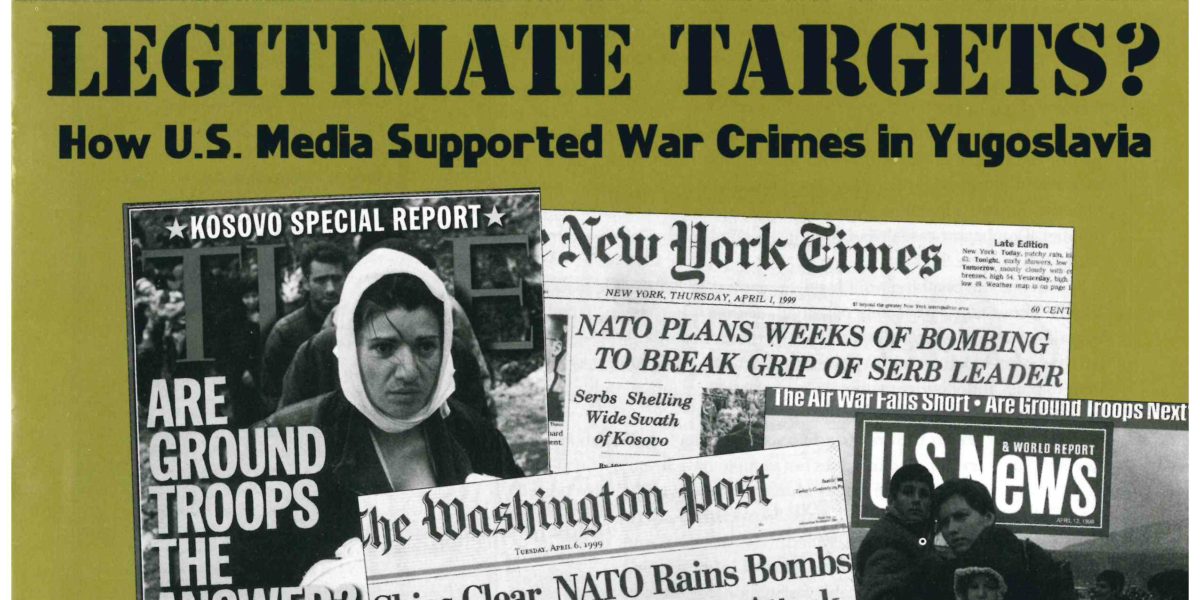 But there was one act perpetrated during Clinton’s and Blair’s terms in office that was a turning point in US-Russian relations, and that was the illegal bombing campaign in Yugoslavia. That act, along with the NATO expansion, changed the Russian view toward the West and assured Russia’s distrust of Western intentions into the future. That event was also what kick-started Russia’s rejuvenation, its gradual move away from IMF policies and its centralization of authority – ‘restoring the vertical’ – a more 7th ray exposition of government. Russia’s actions, in turn, earned it the ire of Washington, the EU and London, because Russia kicked out the financial capitalists and returned to industrial capitalism. This was the central theme leading into the 21st century in terms of geopolitics. China had been rising quietly all that time as well. The PNAC had also been put forward in Washington and was to become a central doctrine in what think tanks in Washington would push, asserting military might over diplomacy. ‘Peace through strength’ remains conservative doctrine in foreign policy to this day.
But there was one act perpetrated during Clinton’s and Blair’s terms in office that was a turning point in US-Russian relations, and that was the illegal bombing campaign in Yugoslavia. That act, along with the NATO expansion, changed the Russian view toward the West and assured Russia’s distrust of Western intentions into the future. That event was also what kick-started Russia’s rejuvenation, its gradual move away from IMF policies and its centralization of authority – ‘restoring the vertical’ – a more 7th ray exposition of government. Russia’s actions, in turn, earned it the ire of Washington, the EU and London, because Russia kicked out the financial capitalists and returned to industrial capitalism. This was the central theme leading into the 21st century in terms of geopolitics. China had been rising quietly all that time as well. The PNAC had also been put forward in Washington and was to become a central doctrine in what think tanks in Washington would push, asserting military might over diplomacy. ‘Peace through strength’ remains conservative doctrine in foreign policy to this day.
 The sole hegemon: At the turn of the 21st century, the US was the sole hegemon, for a time. Russia was still weak, except for its nukes, was still dependant on IMF loans and had not affected rapprochement with China at that point, except to sign a Treaty of Friendship. China was admitted to the WTO in 2001. Meanwhile, Russia and China were quietly building their middle and lower classes and pulling millions of people out of poverty, as well as building their infrastructure and industrial capacity. China had announced its policy of China’s Peaceful Development, which would carry forward until Xi Jinping came to office. We should note here that with China’s opening to the West and with restrictions removed on foreign ownership and development, the period of the Clinton-Blair years saw a vast deindustrialization, especially in the first decade of the 21st century, but which had its start in the 1980s under the market reforms of Reagan and Thatcher. Many of the industries lost went to China, Mexico and Southeast Asia. A great amount of blame for that has been heaped on China. But China did not ‘take’ those jobs, for example, in the sense of stealing them. Those jobs were handed to China and like countries on a silver platter by Western financiers and industrialists in the name of maximizing profits. So, instead of blaming those nations (China is the flavour of the times) for our loss of industry, the answer lies on our own doorstep.
The sole hegemon: At the turn of the 21st century, the US was the sole hegemon, for a time. Russia was still weak, except for its nukes, was still dependant on IMF loans and had not affected rapprochement with China at that point, except to sign a Treaty of Friendship. China was admitted to the WTO in 2001. Meanwhile, Russia and China were quietly building their middle and lower classes and pulling millions of people out of poverty, as well as building their infrastructure and industrial capacity. China had announced its policy of China’s Peaceful Development, which would carry forward until Xi Jinping came to office. We should note here that with China’s opening to the West and with restrictions removed on foreign ownership and development, the period of the Clinton-Blair years saw a vast deindustrialization, especially in the first decade of the 21st century, but which had its start in the 1980s under the market reforms of Reagan and Thatcher. Many of the industries lost went to China, Mexico and Southeast Asia. A great amount of blame for that has been heaped on China. But China did not ‘take’ those jobs, for example, in the sense of stealing them. Those jobs were handed to China and like countries on a silver platter by Western financiers and industrialists in the name of maximizing profits. So, instead of blaming those nations (China is the flavour of the times) for our loss of industry, the answer lies on our own doorstep.
On a personal note I witnessed the deindustrialization first-hand in my own region. In the late ‘80s and early ‘90s the textile industry in central North Carolina began to close up its shops and move production overseas. Bangladesh, India and China were favoured destinations. Burlington Industries used to be the biggest employer in my county, employing thousands. It exists no more as Burlington Industries, its assets being finally sold off in 2003. Furniture in the Piedmont also used to be king. Those industries, too, began to move out of the area and imports took the lion’s share of sales in the region once free trade agreements kicked in and cheaper labor overseas replaced domestic labor. Iconic industries in the region closed their doors. Now those old factories are outlet malls and storage facilities. People who had permanent jobs in those factories were thrown into the temp market or retrained for other work, if they were lucky enough to do so. The ‘gig economy’ was born. I watched the same thing again in Australia with the automotive and mining industries, especially in the workshops that supplied those industries. Aussie wages just could not compete with India and China. And that brings us to the present century.
The end of history? Really?: Before going there, though, when the Soviet Union collapsed it was heralded by Francis Fukayama as “the end of history”, meaning, “…the end-point of mankind's ideological evolution and the universalization of Western liberal democracy as the final form of human government.” (pg. 16 of his book of the same title) His thoughts were premature, if not off the mark. The West celebrated the end of the Cold War and the coming of ‘democracy’ to the Eastern bloc. However, given the developments thus far this century and coming to our present year, the eclipse with the attendant Saturn/Pluto/Ceres conjunction on 9 January this year did indeed mark a point of no return, as in ‘an end of history’. But instead of the end of Socialism, as in the Soviet Union, this ‘end of history’ marked the beginning of the end for the dominance of the West, which has been the dominant force across the world over the last half of the previous millennium. With all the preceding points in mind, we move on to the present century and Part 2 of this letter.
9/11 and the New American Century: With 9/11 as the ‘new Pearl Harbor’, the US began to overextend itself militarily, spending trillions on ‘defense’ in the Middle East and Central Asia and bankrupting the American purse. This marked the turn of the century impulse that set the tone for what is evolving in our present century. The UK was doing so as well, though more modestly. Meanwhile, neoliberalism was producing the next large stock market bubble, the Bush administration cut taxes on wealth and pushed further deregulation, producing a budget deficit, and Tony Blair in the UK went full-in on the war in Iraq. The Iraq War in 2003 was illegal under UN mandates and was opposed by China and Russia in the UN Security Council. Overall, the main focus of US and UK foreign policy was still very much imperialistic, seeking the overthrow of seven countries in five years to secure oil resources and strategic positioning. And the NATO expansion eastward was going on apace. This was to be the main theme of events until the 15-year mark was reached in this century. Events then began to turn dramatically against the West.
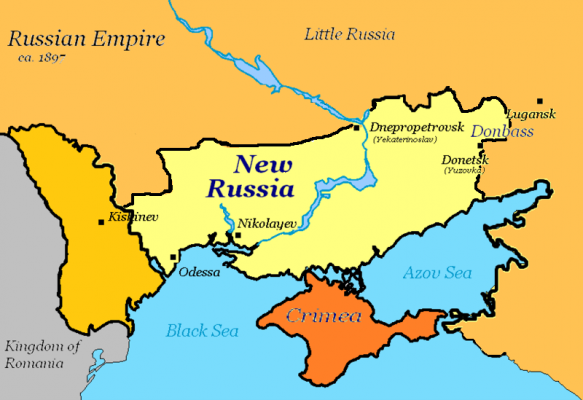 The 2015 turning point: There are two events around the 15-year mark of this century that bear examination and will explain why the West is receding. The first event to consider is the 2014 Maidan coup in the Ukraine, which ousted the Russia-friendly PM Poroshenko at the time. This was a far-right, nationalist coup promoted by Joe Biden. It was ‘his baby’, and he will have to address it during his term in office. The aftereffects of that coup have ruined the Ukraine. The Ukraine was to be the big prize for the NATO expansion eastward. It was meant to close off Russian access to the Mediterranean and secure European shipping in the region and isolate Russia. That coup was a sort of end game for the West to ensure Russia’s rise would be thwarted. The plan failed and for reasons against which the Western think tanks had not counted. Having the Ukraine as a Western puppet state would have pushed Russia off its naval base at Sevastopol in Crimea, which gave them access to the Mediterranean via the Black Sea and the Bosporus. Closing that base to the Russians would have also virtually crippled its warm water bases in Syria and would have hastened the overthrow of Assad, because Russia would have been hard pressed to support Assad without a naval presence there. The Russian annexation of Crimea was thus a strategic necessity, as seen by the Russians, not to mention the fact that the vast majority of the people in Crimea are ethnic Russian. Crimea had been gifted to the Ukraine, illegally under Soviet law, in 1954. The annexation of Crimea was seen in its essence by the US military for what it was – the breakout of NATO encirclement by Russia, thus marking a guarantee of Russian security in Russia’s west and their access to the Mediterranean. Since that point, the Black Sea is now seen as a ‘Russian lake’.
The 2015 turning point: There are two events around the 15-year mark of this century that bear examination and will explain why the West is receding. The first event to consider is the 2014 Maidan coup in the Ukraine, which ousted the Russia-friendly PM Poroshenko at the time. This was a far-right, nationalist coup promoted by Joe Biden. It was ‘his baby’, and he will have to address it during his term in office. The aftereffects of that coup have ruined the Ukraine. The Ukraine was to be the big prize for the NATO expansion eastward. It was meant to close off Russian access to the Mediterranean and secure European shipping in the region and isolate Russia. That coup was a sort of end game for the West to ensure Russia’s rise would be thwarted. The plan failed and for reasons against which the Western think tanks had not counted. Having the Ukraine as a Western puppet state would have pushed Russia off its naval base at Sevastopol in Crimea, which gave them access to the Mediterranean via the Black Sea and the Bosporus. Closing that base to the Russians would have also virtually crippled its warm water bases in Syria and would have hastened the overthrow of Assad, because Russia would have been hard pressed to support Assad without a naval presence there. The Russian annexation of Crimea was thus a strategic necessity, as seen by the Russians, not to mention the fact that the vast majority of the people in Crimea are ethnic Russian. Crimea had been gifted to the Ukraine, illegally under Soviet law, in 1954. The annexation of Crimea was seen in its essence by the US military for what it was – the breakout of NATO encirclement by Russia, thus marking a guarantee of Russian security in Russia’s west and their access to the Mediterranean. Since that point, the Black Sea is now seen as a ‘Russian lake’.
Following on Crimea, Russia quickly turned her attention to Latakia on Syria’s coast, at the invitation of Assad, with the aim of establishing a strengthened Russian presence in Syria and inviting Russian participation in Syria’s war, on the side of the Syrian government. When Russian planes began bombing Daesh oil convoys headed to Turkey at the end of September 2015, that brought the ‘seven countries in five years’ plan to a close, if it was ever a real plan. But the carry-on from the Russian intervention there has had some notable effects.
Firstly, there was talk in Washington of establishing a no-fly zone over Syria before the Russians intervened. That was put on indefinite hold by Russia. Next, the Turks had a run-in with the Russians and had to back-track after they shot down a Russian fighter jet. Since then, Turkey has started to play both sides of the fence between NATO and Russia and has purchased Russian antiaircraft systems. The beginnings of a schism began to appear in the NATO alliance. This was in response to the attempted coup in Turkey. After the Turkish debacle, Russia emerged as a major intermediary in the region and relationships between the nations of the Middle East began to change quickly. There has been a Shia renaissance in the region, which has threatened the power base in the Gulf monarchies, has stopped Israeli-American imperialism in the region and has ultimately led to the gloss coming off the cooperation that has been ongoing between the Sunni states and Israel for years. Some readers may think the recent agreements between Israel and Gulf States have been due to Trump’s wheeling and dealing. But in fact, it has been building since 2015 due to the failure of the war in Syria, the rise of Hezbollah as a viable army against Israel and the failure of the war in Yemen, which also started close to the 2015 mark.
The issue now for the Israeli-Sunni-Western axis, if we might call it that, is that without a united front to counter the Shia influence (and for the France/UK/US axis, Russia and China) the days of the Gulf monarchies are very short now and the region is quickly becoming stabilized under a new order, one which runs counter to imperial aims and introduces an economic note that is decidedly counter to neoliberalism and globalization. These developments also put a considerable strain on Israeli society due to fear of reprisals for Israeli attacks in the region. What we see now is an Israel encircled by neighbors who would like nothing better than to see the Zionist regime there disappear, an Israeli PM (Bibi Netanyahu) on the ropes politically and increasingly desperate, an American president who is also on the ropes and desperate to stay in office, a Saudi prince (MbS) who is likewise desperate to maintain the monarchy and other oil-producing Gulf States left feeling very vulnerable and with their own monarchies under pressures for change within. It is a perfect setup for a war in the region, and many pundits are forecasting one. However, if the brief video linked previously with the US Lt.Gen Stewart is any indication, cooler heads will prevail. The militaries of the world know full well the capabilities of the various armed factions in the region and what a war would produce. That is probably the main reason we have not seen a wider conflict there before now. It also goes to why we will not be seeing another world war, considered presently.
We have seen the advancing decline of the West in graphic detail as a result of the pandemic. If that decline marks the end of the West’s military dominance, which it does, then this is a cause to be celebrated. Why, one might ask, if there are serious threats from ‘rogue states’ still in evidence and ‘malign actors seeking the downfall of the West’. The answer is best answered by another question: Who is really threatening the Western nations, and if so, what is the nature of the threat? The simple answer, which we will outline, is that there is no aggressive military threat to Western nations. It is a story concocted by vested interests in the Western nations to justify all sorts of true malign activity and profits by corporate interests. And the primary means of promoting such a cynical state of affairs is by fearmongering via the Western media. None of the states we now think of as enemies want a war with the West. In fact, they have sought cooperation all along. There is one more event to consider at the 2015 mark, and then we will have a look to the future, war or not.
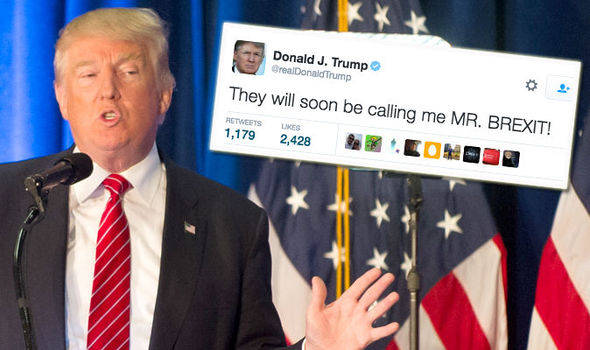 The year was 2016, still within the timeline we are examining. There was an election in the US and a vote in the UK to leave or remain within the EU. So, we are looking at another pairing of events between the US and UK – Trump and Brexit. In effect, they are two events representing the same evolution of Western capitalism. Conservatives will say those two votes, which saw Trump elected as President and a successful Brexit vote were in fact a victory for sovereignty and for the people. They were a victory in one respect, but not for the common person – those votes were a victory for what has been called ‘the capitalist warlords’ – the vested interests mentioned at the start of this letter.
The year was 2016, still within the timeline we are examining. There was an election in the US and a vote in the UK to leave or remain within the EU. So, we are looking at another pairing of events between the US and UK – Trump and Brexit. In effect, they are two events representing the same evolution of Western capitalism. Conservatives will say those two votes, which saw Trump elected as President and a successful Brexit vote were in fact a victory for sovereignty and for the people. They were a victory in one respect, but not for the common person – those votes were a victory for what has been called ‘the capitalist warlords’ – the vested interests mentioned at the start of this letter.
The vested interests: Just who are these people, then, these vested interests? The short answer is the people who hold the money and power to influence government policy, often against the wishes of the populace, largely for their own self-interest. We might call them the 1%, the ‘deep state’, the oligarchs, the powers-that-be, etc. They have many monikers. They are the contemporary Western capitalist ruling class (see that exact heading highlighted in the link in that long article). We know a few of the more visible names – Mercer, Adelson, Soros, Gates, Bezos and so forth. But they are just the very tip of a very large iceberg. The real power is more insidious and unknown to all but those who hold the real power. A recent article gives a long list of what that writer calls the ‘owners’ of Joe Biden, for example, and how it all works. The article is eye-opening. And on the whole, the vested interests have isolated themselves from the public – from us, the ‘great unwashed’ – and ply their influence from behind the scenes, out of the public eye. This is not to say that everyone who has great wealth works in these circles and within those means, but it is probably safe to say most of them do.
We aren’t talking about single individuals when we talk of the vested interests, though. Instead, we are talking of family groups and corporate interests. The families send their kids to the same schools, mix in private clubs, choose their partners from similar families, vote along similar lines and own a great deal of the real estate and industry within a given region. It is an old story, as old as humanity, really. But, this sort of influence has been behind the dominance of the West for the past five centuries, and it is being challenged now by nations such as Russia, China and Iran, who are developing along divergent lines to those of the West. The Asian model is more collective instead of being focused on private property and property rights, though those nations do have their own family groups. However, those groups are not allowed undue influence in the workings of those governments, and therein lies one of the primary differences in those cultures, most of them being ancient. In these last two sentences we see the true threat to Western dominance. It is not a military threat. It is the threat of a system coming undone in the face of emerging realities. And the people of many nations are beginning to catch on to the game being foisted on us.
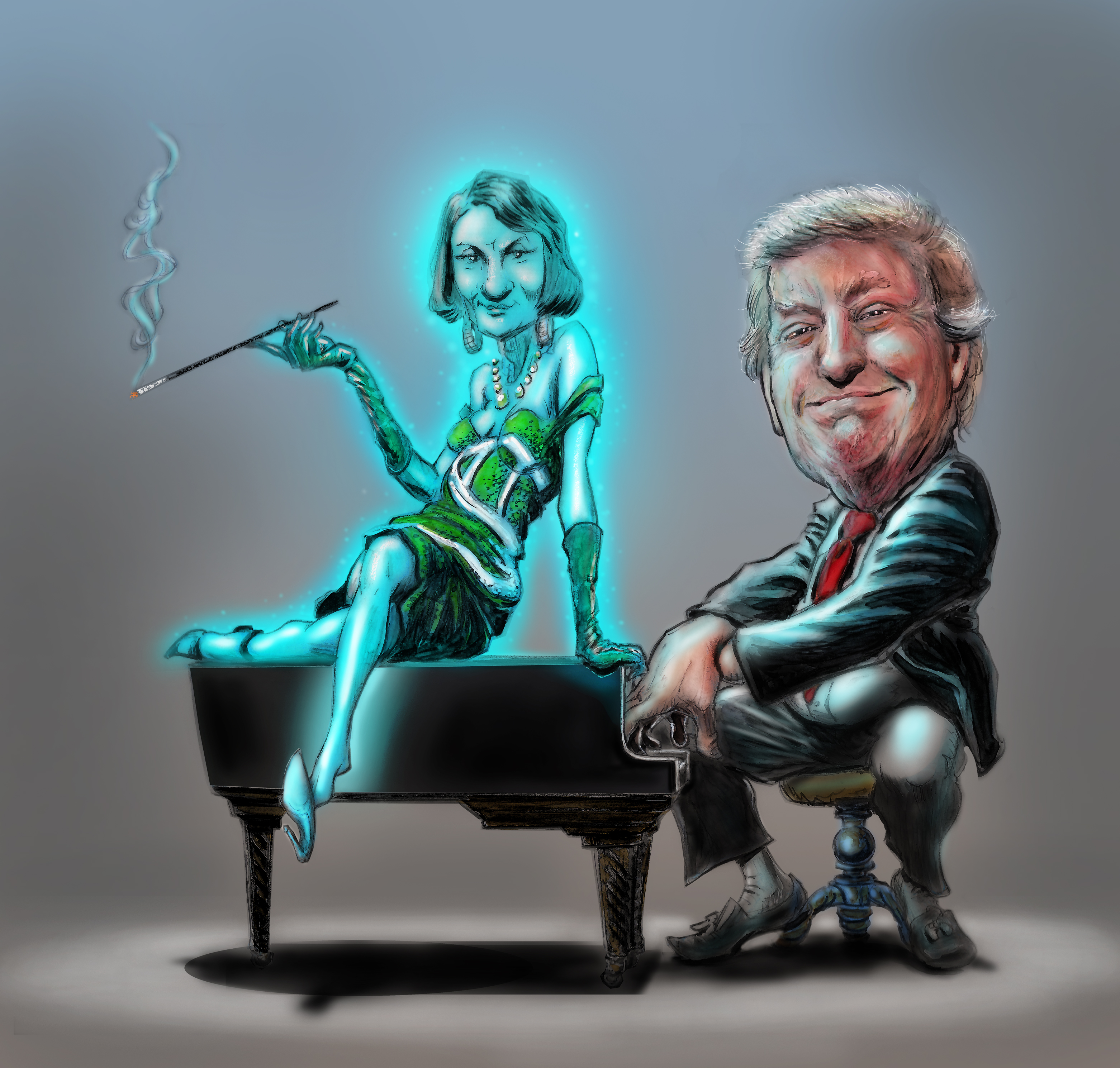 Returning to 2015, then, there is a video by George Monbiot, who describes what took place with the Brexit vote, and we see the same sort of story being played out in the US. What he describes is a kind of civil war that is taking place between capitalists of all stripes, but mainly between those who have a veneer of kindness toward the public, which Joe Biden represents, and the hard-line fake libertarian class who want all regulations taken away in a move toward an Ayn Randian type of social order. It should be noted Ayn Rand ended her life in a poor financial situation due to big spending, poor business judgement and neglect to capitalize on her books, all the while drawing Social Security and Medicare benefits. As much as conservatives and libertarians love her work, she was known for her poor judgment when it came to her own financial situation, otherwise she would not have drawn social benefits, which she claimed to abhor. In fact, she altered her philosophy in several instances to suit her situation, otherwise known as hypocrisy. These things are important to consider when we look at the key people who ascribe to her principles, or perhaps her lack of principles, and people in politics such as Trump, the Pauls and Paul Ryan who also ascribe to them.
Returning to 2015, then, there is a video by George Monbiot, who describes what took place with the Brexit vote, and we see the same sort of story being played out in the US. What he describes is a kind of civil war that is taking place between capitalists of all stripes, but mainly between those who have a veneer of kindness toward the public, which Joe Biden represents, and the hard-line fake libertarian class who want all regulations taken away in a move toward an Ayn Randian type of social order. It should be noted Ayn Rand ended her life in a poor financial situation due to big spending, poor business judgement and neglect to capitalize on her books, all the while drawing Social Security and Medicare benefits. As much as conservatives and libertarians love her work, she was known for her poor judgment when it came to her own financial situation, otherwise she would not have drawn social benefits, which she claimed to abhor. In fact, she altered her philosophy in several instances to suit her situation, otherwise known as hypocrisy. These things are important to consider when we look at the key people who ascribe to her principles, or perhaps her lack of principles, and people in politics such as Trump, the Pauls and Paul Ryan who also ascribe to them.
The Great Brexit Scam: Now that the UK is leaving the EU in earnest, a deal was struck at the last minute, supposedly avoiding a hard Brexit and chaos. It was like in the Hollywood films, you know? Our heroes save the day just in the nick of time after a nail-biting build-up to the climax of the film. One can apply it to any action film. One can apply it to politics, too. In fact, there are similar markers in horoscopes between film stars and politicians. They both have to act in front of the public. That aside, now that a deal has been done, the British public will be gaslighted by the British media, trumpeting the heroic salvaging of a deal by Boris Johnson, saving the public from the clutches of the evil/intransigent/tyrannical EU super-state. “Free at last!” We can almost see the headlines at the start of the New Year. The truth is somewhat different, though.
The ‘return of sovereignty’ to which the Brexiteers alluded was freedom from any sort of regulations, for which the EU is famous. But more than anything, it referred to financial regulations. Since the Brexit vote in 2016, it has become clear that Brexit was never about the UK escaping a super-state. That was the glamour which was cast over the British public to enable the vote. The public has not escaped anything by leaving the EU, and in fact have been left open to the whim of the minions of the City of London, who are now free to make the UK into the largest offshore tax haven in history. “London will become the high risk centre for the dodgy money and the fast buck, to an even greater extent than it is already.” Watch what evolves there over the next couple of years. And toward the end of next year, the forecast is for inflation and unemployment to rise in the UK as a result of the deal. The EU will now impose a transaction tax on all non-EU transactions, which will impact the financial sector of the UK, while non-EU actors will be seeking the City of London for its minimal scrutiny over transactions. Brexit has been a great victory for neoliberalism. Trump’s election in the US in 2016 was much the same, for all his campaign rhetoric about ‘making America great again’. The vested interests got what they wanted from Trump – cuts to regulations, cuts to taxes on their own interests and an even more divided nation. Now they no longer need him.
The Great MAGA Scam: The final cuts to all financial regulations are what the Republicans, headed by Mitch McConnell in the Senate, are pursuing in the US, and the Democrats are not far behind them. The Randian philosophy these people embrace was shown to us during the pandemic, with the paltry sums given to the public while the wealthy and corporations saw their wealth increase dramatically. What the public has been shown in both nations, above all, is that government does not work for them or in their interests. The pandemic has been an ‘Antoinette moment’ for the US and UK and will be remembered in the immediate years ahead. Corruption has risen in the UK under the crisis. The wealth of billionaires in the US has risen sharply, while the average American family had their main benefits cut after July, with a lone $600 check, just passed through Congress, in a bill that was stacked with all sorts of strange items, 5,593 pages in length. Just for reference, that is just short of the total number of A4 pages in all of Alice Bailey’s books.
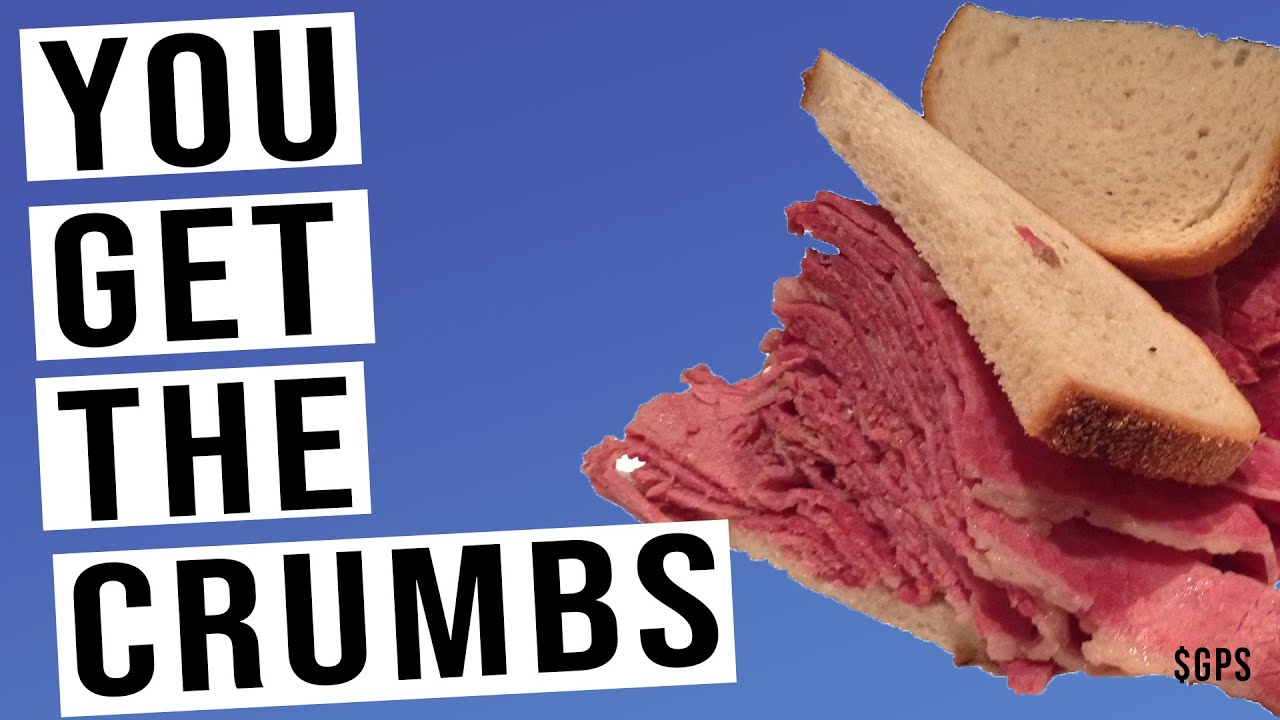 It was the largest bill in American history. Trump threatened to veto it, in what was seen by many as a cynical political stunt at the end of his presidency, as in he had not given much support to families up to that point. He eventually signed it. But even worse was the fact of Congress hemming and hawing about what to pay families all this time, as if there should be a question, and instead earmarking aid for, say, the Tibetan government in exile, and various other regime change efforts. It also included aid for gender programs in Pakistan. As well, it included extra billions in defense spending, on top of the $740 billion defense spending bill Trump just vetoed, doing so not because it was too much, but because it didn’t go far enough in supporting veterans (which was a good call) and that there was not enough in the bill earmarked for countering Russia and China (what did we expect?). There was also a half-billion dollar gift to Israel. Let that $600 figure sink in.
It was the largest bill in American history. Trump threatened to veto it, in what was seen by many as a cynical political stunt at the end of his presidency, as in he had not given much support to families up to that point. He eventually signed it. But even worse was the fact of Congress hemming and hawing about what to pay families all this time, as if there should be a question, and instead earmarking aid for, say, the Tibetan government in exile, and various other regime change efforts. It also included aid for gender programs in Pakistan. As well, it included extra billions in defense spending, on top of the $740 billion defense spending bill Trump just vetoed, doing so not because it was too much, but because it didn’t go far enough in supporting veterans (which was a good call) and that there was not enough in the bill earmarked for countering Russia and China (what did we expect?). There was also a half-billion dollar gift to Israel. Let that $600 figure sink in.
What we just saw with the Brexit deal (the last-minute cling-to-your-seat drama) is also being played out in the US, with the lead-up to the Senate confirmation of the Electoral College vote, which will see Trump leaving office on the 20th. The media of all sorts in the US is playing up the drama instead of reporting with common sense, with all sorts of wild scenarios about martial law, attacks on Iran, Trump refusing to leave, etc. It’s great entertainment, if we want to call it that, but it is hardly true. For any Trump supporters who may be reading this, there are two sides to the phenomenon of Trump. There is the side his voters had hoped for – draining the swamp, bringing back jobs, making America No. 1 in the eyes of the world again, and so forth. It is worth asking how much of that actually came true. “Well, if we just had four more years…” That’s all well and good, but there is a reality that escapes many people about Trump: His world is reality TV.
The fact is, Trump has furthered the aims of the very ‘deep state’ he is said to oppose. Let’s check off some items that will illustrate the point:
- The vested interests want to stop the rise of China and Russia (sanctions and trade wars). Check
- They want Israel to remain a strong Western outpost in the Middle East in order to keep the flow of resources to the West unhindered, hence the fawning support for the Zionists (by keeping the region destabilized). Check
- That means stopping the rise of Iran. Check
- They want to stop any hint of socialism or communism in the Western hemisphere because that threatens their economic model. Check
- They want the EU weakened as an economic bloc because it threatens their bottom line. Check
- They need to stop the rise of any sort of sentiments in the US about increasing social programs and raising taxes on wealth, etc. Check
- They want the stock market high because it keeps their bottom line intact. The people can practice rugged individualism in the meantime. It’s a great American value, see? Check and double-check
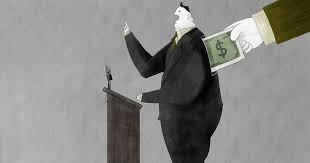 The vested interests in the US and across much of the West have wanted these very policies for years. The problem with all of these checked-off items is that they haven’t worked. Iran is still strong (yes, it is), Israel is weakened and hemmed in, people in the US are catching on to the cuts in their livelihood and benefits, Bolivia has just voted in socialism again, and Venezuela and Cuba still stand as socialist societies. And China and Russia stand stronger than ever (yes, they do) and now more united than ever. It’s clear to the vested interests that something is not working. Perhaps another President will do the trick.
The vested interests in the US and across much of the West have wanted these very policies for years. The problem with all of these checked-off items is that they haven’t worked. Iran is still strong (yes, it is), Israel is weakened and hemmed in, people in the US are catching on to the cuts in their livelihood and benefits, Bolivia has just voted in socialism again, and Venezuela and Cuba still stand as socialist societies. And China and Russia stand stronger than ever (yes, they do) and now more united than ever. It’s clear to the vested interests that something is not working. Perhaps another President will do the trick.
Watch what happens with the Biden administration if you don’t think anything in the checklist just outlined is true. All of those policies outlined will continue, just with a kinder (perhaps ‘slicker’ is a better word) face. Biden supporters may cringe at that, but keep in mind, Biden is an establishment, corporate Democrat. He was chosen because Bernie sought to undo the schemes of the vested interests to a significant degree, especially domestically. Hence, Bernie was ousted. It was the same with Corbyn in the UK. The big ‘threat’ to the West’s dominance, led by the US and UK, is what is happening in Russia and China domestically, which is why we hear virtually nothing good about those nations in the mainstream. Regarding Russia, Iran and China, we now come to a matter that has been on everyone’s mind lately.
War, anyone?: Suppose they gave a war and nobody came? Remember that movie from 1970? As a question, this is what the think tanks in Washington are facing in seeking to get their erstwhile allies in on their little diversion of pushback against China, or Russia, or Iran. Because, that is what supposed pushback against those nations is – a diversion. I’ll explain why shortly. I have stated several times in past letters that we should not expect another large war, especially against the aforementioned nations. The response from several readers has been, “Well, I hope you are right.” And it is easy to think that war may well be coming, with all the posturing by Western powers, resistance in Asia and increases in military spending. But appearances can be deceiving. Having studied this matter for several years now, and given the preceding statements, it will be useful, perhaps, to outline why we should not expect a war with a major regional power, or even one that is not necessarily that strong militarily, like Venezuela. And after making the statements to follow, it will raise some rather inconvenient realities about the state of affairs in the US-led West.
To begin, if there is to be a war with any of said nations, we would have to take the war to them. We are already doing so economically via sanctions, in an attempt to foment instability in those nations in hopes the people will overthrow their ‘regimes’ and ‘come to their senses’. Then, we can show them the road to democracy – American-style. But why would we have to take the war to them, meaning invasion and/or blockade? The simple answer is they do not wish to oblige us in our quest for war with them. They would rather focus on their domestic growth and their growth in trade with other nations other than be bothered with a military conflict that would likely lead to destruction of their state infrastructure, or engage in an arms race that would severely deplete their national coffers, and which really would cause unrest in their populace. The longer they can avoid a war with us (meaning any Western nation), the longer they have to develop their economies, infrastructure and necessary defences against our increasing pressures.
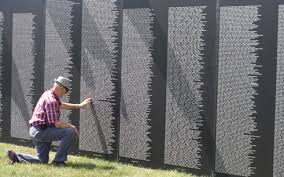 Secondly, Americans especially have a great aversion to American casualties. We remember Vietnam and all the KIAs and WIAs coming home on those military transports. It left a bad taste. And let’s not mention all the casualties in those other nations, shall we? It tends to sour people on thoughts of war, even when it comes to ‘protecting American interests’ or ‘saving’ people of other nations from repressive regimes – our so-called ‘R2P’ – ‘right to protect’, speaking of hubris. Raqqa is a recent case in point, where 90% of the city was destroyed by indiscriminate bombardment, claimed to be ‘precision strikes’, to liberate the city from Daesh. The once-vibrant city was reduced to a virtual ghost town, and even now the funds to rebuild the city are being withheld. We would like to see an end to the ‘endless wars’ in Iraq and Afghanistan, and Syria to a lesser extent. Actually, there is a long list of nations where we have invaded and/or currently engage in drone warfare, not to mention the casualties of economic warfare, most always civilian.
Secondly, Americans especially have a great aversion to American casualties. We remember Vietnam and all the KIAs and WIAs coming home on those military transports. It left a bad taste. And let’s not mention all the casualties in those other nations, shall we? It tends to sour people on thoughts of war, even when it comes to ‘protecting American interests’ or ‘saving’ people of other nations from repressive regimes – our so-called ‘R2P’ – ‘right to protect’, speaking of hubris. Raqqa is a recent case in point, where 90% of the city was destroyed by indiscriminate bombardment, claimed to be ‘precision strikes’, to liberate the city from Daesh. The once-vibrant city was reduced to a virtual ghost town, and even now the funds to rebuild the city are being withheld. We would like to see an end to the ‘endless wars’ in Iraq and Afghanistan, and Syria to a lesser extent. Actually, there is a long list of nations where we have invaded and/or currently engage in drone warfare, not to mention the casualties of economic warfare, most always civilian.
So, if we take the war to these nations, we would have to invade. Bombing simply will not do it, especially with nations where national pride is strong. To do so we would have to establish air superiority. This is increasingly problematic. There is a little matter of air defense systems that would have to be ‘pacified’, and the aforementioned regional powers have quite advanced air defense systems. Stealth aircraft can be tracked with current radar systems. The Russians tracked American F35s on Iran’s borders during the Iranian attack on the American bases in Iraq after the assassination of Soleimani. And then, there is even the problem of getting those aircraft in close enough to fly sorties over said nations. With current standoff capabilities in anti-shipping missiles, again in said nations, the fight is over before it even starts. Any surface vessel, as in aircraft carriers, is a sitting duck given such missile technology. No military vessel is going to survive a missile swarm, which is what they would encounter. One Russian missile frigate (they have 11 in service, currently) has the capacity to sink four American aircraft carriers. No air superiority, no invasion. Too many American casualties. That spells domestic political suicide for leaders who would back such a foolish thing. These reasons are also why Russia is not looking at developing aircraft carriers in the near future.
That standoff capability in missile tech is why we have not seen any major attacks on any nation since 2015. Yes, we lobbed a few missiles into Syria in response to the faked chemical weapons attack alleged against Assad, but other than that there have been no large military operations anywhere except for war games. That attack brought up some other inconvenient realities, in that 71% of the 100+ missiles we lobbed in there were either diverted or shot down. That was using old Russian air defense systems. That’s not a good average for the West. The present Russian systems are far better than the ones used in Syria at the time. In contrast, the Patriot missile systems have a pretty woeful record. They were designed as antiaircraft systems to begin with and not even missile intercept systems. They would be useless against any hypersonic weapons and have been ineffective even recently against even subsonic missiles. The Israeli Iron Dome system performs much the same as the Patriot system – not that well. If we pick a fight with any of the nations mentioned we would face the fact that our own antiaircraft/air defense systems are spotty at best, and those nations have vowed to strike any platform that launches missiles against them, including aircraft from aircraft carriers and overseas bases. We should probably take them at their word.
This standoff capability of Russia, Iran and China needs a little bit of parsing because it will explain much about why the US pulled out of the ABM Treaty, why Trump pulled out of the JCPOA and why the sanctions stay in place against Russia. North American readers may perhaps remember the old Superman TV series with the opening line, "Faster than a speeding bullet, more powerful than a locomotive…” etc. Recent advances in missile defense systems echo those words, except it is not the Americans who have such systems. It is the Russians, Chinese and Iranians who have them now – hypersonic and hypersonic-capable missiles. Yes, they are a reality. Just how fast is a bullet, then?
 The fastest bullets travel at between Mach 2 and Mach 3, or at most around 1,800 mph/2880 km/h. Mach 1 is the speed of sound in air. That’s pretty fast. Bullets are supersonic (faster than Mach 1). That means you will hear a bullet hit something before you hear the gunshot. One cannot see a bullet leaving a weapon (We’re not superhuman yet.) and we don’t know it has been fired until it hits the target, under normal circumstances. Contrast that, now, with hypersonic missiles (Mach 5+) and we immediately see a problem. As stated, Russia, Iran and China have developed hypersonic missiles, or missiles that can reach those speeds. You won’t see or hear them coming, and they cannot be tracked with normal radar. They have to be tracked from space or with dedicated, specialized ground-based radar. There is another reason they cannot be tracked, either, because hypersonic missiles, especially at higher hypersonic speeds, develop plasma around them that blocks radar. It is a natural occurrence at such speeds, but it greatly reduces the radar signature. The long and the short of this information is that the West currently has no defences against hypersonic weapons. They lag behind Russia now by about 5 years by most estimates, even just to attain hypersonic cruise missile deployment, much less defense against them, and the Russians have already developed air defences against even hypersonic missiles. That has a particular significance, given the timeline we are examining.
The fastest bullets travel at between Mach 2 and Mach 3, or at most around 1,800 mph/2880 km/h. Mach 1 is the speed of sound in air. That’s pretty fast. Bullets are supersonic (faster than Mach 1). That means you will hear a bullet hit something before you hear the gunshot. One cannot see a bullet leaving a weapon (We’re not superhuman yet.) and we don’t know it has been fired until it hits the target, under normal circumstances. Contrast that, now, with hypersonic missiles (Mach 5+) and we immediately see a problem. As stated, Russia, Iran and China have developed hypersonic missiles, or missiles that can reach those speeds. You won’t see or hear them coming, and they cannot be tracked with normal radar. They have to be tracked from space or with dedicated, specialized ground-based radar. There is another reason they cannot be tracked, either, because hypersonic missiles, especially at higher hypersonic speeds, develop plasma around them that blocks radar. It is a natural occurrence at such speeds, but it greatly reduces the radar signature. The long and the short of this information is that the West currently has no defences against hypersonic weapons. They lag behind Russia now by about 5 years by most estimates, even just to attain hypersonic cruise missile deployment, much less defense against them, and the Russians have already developed air defences against even hypersonic missiles. That has a particular significance, given the timeline we are examining.
It is helpful to understand something about Russian and Chinese weaponry. The systems they have developed are defensive. Those nations have been invaded, with great loss of life and property, several times. The United States, on the other hand, has not – not in the past two centuries. To the Russians especially, their weapons systems are existential. They must work and work well, otherwise their nation stands undefended. And they do work well, witness their performance in Syria against the West’s 100+ missile barrage and continuing usage against all sorts of airborne weaponry, including small drones. The Iranians recently demonstrated their abilities in that area, too, noting the continuing posturing of Western-Israeli forces in that region. To their credit, the Iranians continue to hold their nerve.
So, we hear of talk of war with China. An Expert Military Analysis of War with China (see linked article) tells in stark detail what would happen if some loon, as the author of the article calls them, is stupid enough to try such a folly. The military is having none of it. War with China is a fantasy concocted to keep the public on edge. It is mere posturing, nothing more. No sane analysis argues for such an expedition. The economic consequences alone would be a world catastrophe, and ironically would set the United States back at least several years. War with China would also probably mean war with Russia, given their growing unity and cooperation. War with Iran would be another such fool’s errand. If our experience in Iraq and Syria have shown us anything, a war with Iran would be far worse than either of those. Again, the military would have none of it. That brings us to why the US has pulled out of arms treaties and the JCPOA, the reason being the standoff capability of the three aforementioned nations.
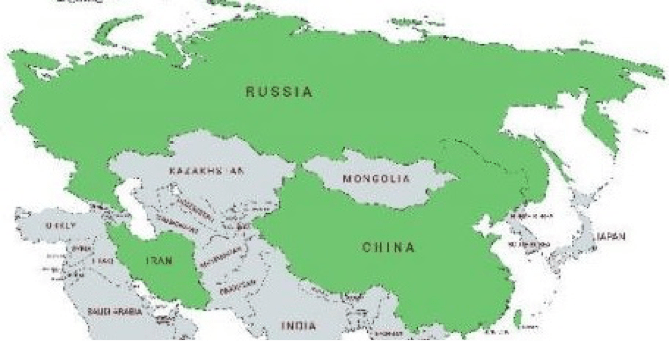 Iran has developed its missile capabilities to the point where it can target carrier battle groups in the Arabian Sea, up to 2,500 km away from Iran. That is their defensive strategy against threats from the US. Those same missiles could also be armed with nuclear warheads. That is not why the US pulled out of the JCPOA, though. The US and other powers in the Middle East want Iran to do away with those missiles. The pull-out from the JCPOA was an effort to either cause regime change in Iran, or force them back to the negotiating table, wherein they would be forced to give up their missile development. That just will not happen. Iran has other options. China and Russia see Iran as an essential link in their own developmental and defense strategies. The Israelis and the US use the threat of Iran’s (non-existent) nuclear weapons program as a pretext for all of their carry-on about Iran, when it is instead really about the Iranian missiles and their ability to defend themselves. It is much the same with Russia and its missile defense systems, which is why the US pulled out of the INF Treaty. It is hypocrisy on the part of the US, as they have nuclear-capable missiles within striking distance of Moscow. The Russians need do nothing, but they do want to limit the threat of nuclear arms, which means the US would have to pull its missile systems back from Russia’s borders. It is a very dangerous situation, with no side willing to budge and we find ourselves closer to nuclear war than we have ever been. Still, we need to note it is the politicians, urged by the vested interests, who push and test the limits of the patience and resolve of these other powers. Trump, in his ignorance of these matters, has been pulled back by the military from strikes several times. So long as the military prevails, we will not see a large war, either regional or worldwide. We should also note the various militaries of the world are also in regular contact with each other in order to avoid just such a ‘loon-provoked’ war between major powers.
Iran has developed its missile capabilities to the point where it can target carrier battle groups in the Arabian Sea, up to 2,500 km away from Iran. That is their defensive strategy against threats from the US. Those same missiles could also be armed with nuclear warheads. That is not why the US pulled out of the JCPOA, though. The US and other powers in the Middle East want Iran to do away with those missiles. The pull-out from the JCPOA was an effort to either cause regime change in Iran, or force them back to the negotiating table, wherein they would be forced to give up their missile development. That just will not happen. Iran has other options. China and Russia see Iran as an essential link in their own developmental and defense strategies. The Israelis and the US use the threat of Iran’s (non-existent) nuclear weapons program as a pretext for all of their carry-on about Iran, when it is instead really about the Iranian missiles and their ability to defend themselves. It is much the same with Russia and its missile defense systems, which is why the US pulled out of the INF Treaty. It is hypocrisy on the part of the US, as they have nuclear-capable missiles within striking distance of Moscow. The Russians need do nothing, but they do want to limit the threat of nuclear arms, which means the US would have to pull its missile systems back from Russia’s borders. It is a very dangerous situation, with no side willing to budge and we find ourselves closer to nuclear war than we have ever been. Still, we need to note it is the politicians, urged by the vested interests, who push and test the limits of the patience and resolve of these other powers. Trump, in his ignorance of these matters, has been pulled back by the military from strikes several times. So long as the military prevails, we will not see a large war, either regional or worldwide. We should also note the various militaries of the world are also in regular contact with each other in order to avoid just such a ‘loon-provoked’ war between major powers.
On to 2025: Mention was made of the five-year lag of the US in catching up to these hypersonic capabilities. Five years from now is our quarter-century mark. Decisions will be made as to when the spiritual hierarchy of our planet will begin to externalize. New dispensations will begin to come out. The world will need to be a different frame of mind by then. And given the way we are going with Washington in the lead for the West, where do we expect to be? Looking at this year, we are not looking to be in a very good place in the West. If we look back a century to 1925, fascism was on the rise in Italy and Nazism in Germany. Hitler’s Mein Kampf was published in 1925. Europe was in the grip of the post-WWI years, with the Weimar Republic of Germany and new nations having emerged from the rubble of that war. The British Empire was beginning to come apart, having just granted their dominions the right to determine their own foreign policy. The Empire became the Commonwealth (1926). The world was decidedly unstable, as we see today, and the Middle East was being Balkanized and on its way to having a new state, Israel. What do we have today, aside from what has been covered so far?
We have Western governments whose vested interests have insulated themselves somewhat from reality. A recent symbol was the wall that was put up around the White House at the election. It was an apt symbol – the bipartisan divide that has evolved between Washington and the people of the US, insulating the government from the concerns of the people. In the UK, Boris was regularly castigated in social media for having gone into hiding rather than facing the public. We hear regular reports of ‘malign activities’ by foreign powers, most of which have no foundation. Navalny, the Skripals, Xinjiang, Hong Kong, Tibet and now the latest tale, without evidence, of supposed Russian hacking of our infrastructure. People accept these stories without thought, with a jerk of the knee in response and sneering dismissal of the accused state. I see it all time in social media and in comments to articles. We need treaties on this sort of thing instead of hyperbole and a rush to judgement. All this focus on foreign actors only diverts our attention from our problems at home. Yet at the same time, the conflicts within our home nations, events like the coronavirus pandemic bring up, serve to further the growth of human thought and effort, though in the future, the efforts between nations will be cooperative instead of confrontational:
Revolt, the formation of political parties, the class warfare which is so rampant today and the splitting of every country into warring political groups, though sporadic always, have become universal during the past two hundred years, and are all the results of the group activity started by the Masters. Men have grown thereby and have learnt how to think, and even though they may think wrongly and may initiate disastrous experiments, the ultimate good is inevitable and unavoidable. Temporary discomforts, passing depressions, war and bloodshed, penury and vice may lead the unthinking into the depths of pessimism. But those who know and who sense the inner guiding hand of the Hierarchy are aware that the heart of humanity is sound and that out of the present chaos and perhaps largely because of it, there will emerge those competent to deal with the situation and adequate to the task of unification and synthesis. This period has been occultly called the "age of restoration of what has been broken by the fall". The time has come when the separate parts can be reunited and the whole stand together again in its earlier perfection.[6]
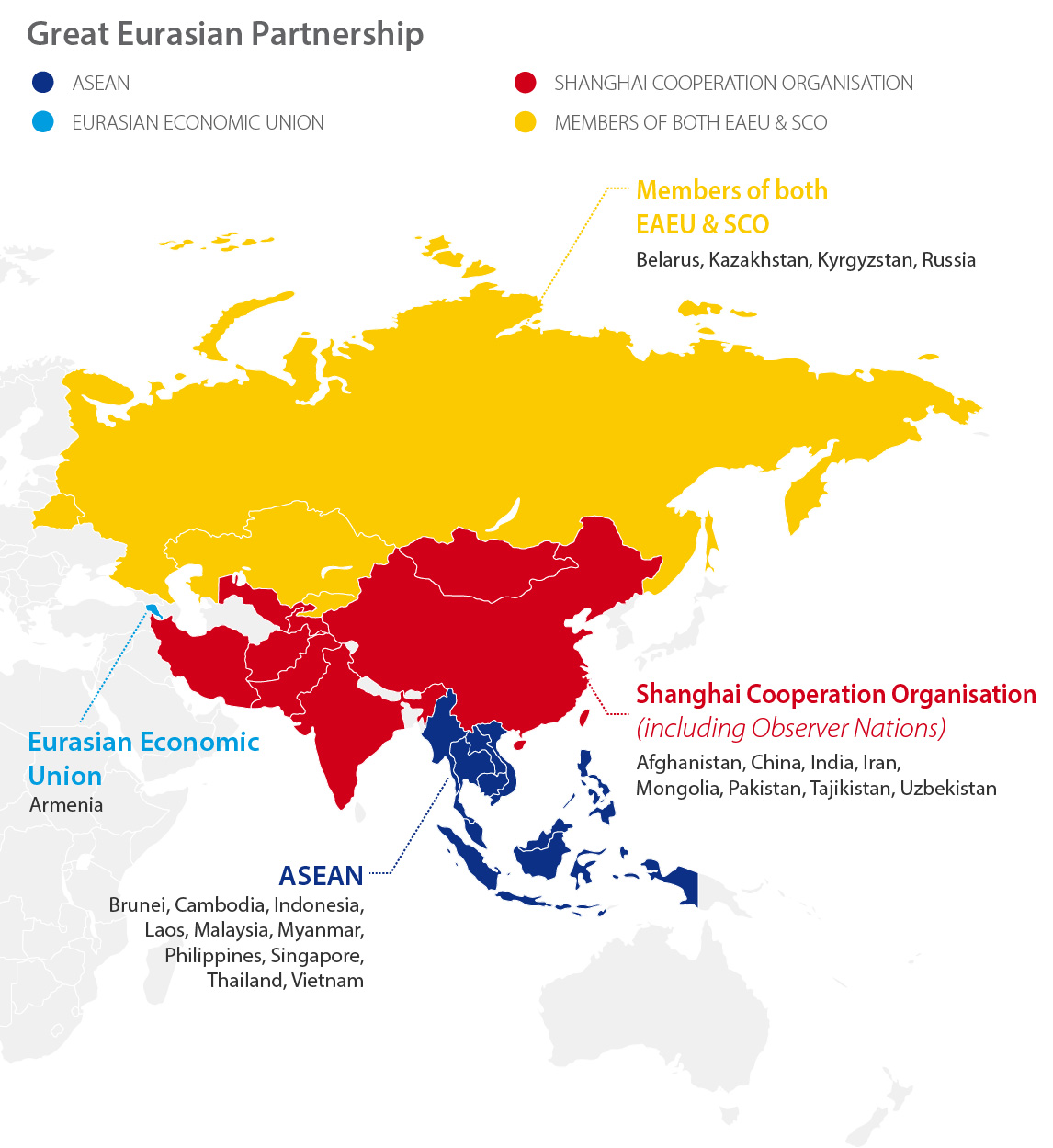 The emerging East bloc: The posturing of the West and its antagonism of the Asian nations and Russia is leading to certain results, some of which have been deemed to be desirable. We are talking here of the emerging world order, which is being produced as much by the fecklessness of Western leadership and their misguided view of the world and their selfishness, as it is by the cooperation between the nation states involved in those emerging realities. The think tanks in the US have a bad habit of overestimating our own abilities and underestimating the abilities of our supposed adversaries. The wall around the White House as a symbol applies as much to foreign affairs as it does to domestic policy. As to the emerging order, we have the following:
The emerging East bloc: The posturing of the West and its antagonism of the Asian nations and Russia is leading to certain results, some of which have been deemed to be desirable. We are talking here of the emerging world order, which is being produced as much by the fecklessness of Western leadership and their misguided view of the world and their selfishness, as it is by the cooperation between the nation states involved in those emerging realities. The think tanks in the US have a bad habit of overestimating our own abilities and underestimating the abilities of our supposed adversaries. The wall around the White House as a symbol applies as much to foreign affairs as it does to domestic policy. As to the emerging order, we have the following:
"Certain major groupings would seem possible and probably advisable [referring to emerging blocs]. They might be divided as follows:
1. A Federal Union of the great democracies after the war [WWII]. This might include the British Empire as a whole, the United States, the Scandinavian countries and certain northern European nations, including Germany.
2. A Union of the Latin countries, including France, Spain, all the Mediterranean countries, the Balkan countries (except one or two which might be absorbed into the U.S.S.R.), and South America.
3. The United Soviet Socialist Republics and certain Asiatic nations working in collaboration with them, such as China, and later Japan.
These three great blocs would not be antagonistic blocs but simply geographical spheres of influence. They would all three work in the closest unity and economic relation. Each nation within the three blocs would preserve its sovereign independence, but between these independent nations and between these blocs there would be identity of purpose, unity of effort and the recognition of the economic control of a league of nations. This league, being formed of the representatives of all the nations and its inner governing body being chosen by the three blocs, would control all sources of supply, distribute all such supplies and determine all economic policies.
With the details of these future adjustments I shall not deal. They must be wrought out by the men and women of goodwill in the crucible of experiment and experience. Only universal disaster could have brought men to a state of mind wherein such propositions and solutions could be presented. The general recognition that the old order has lamentably failed is most valuable."[7]
We note especially the third point, above. The USSR is now the Russian Federation. The British Empire is no more. The EU has come into being, but is in process of breaking (more on that in a future piece). We note also that these blocs are listed as future developments, at the time of writing, from the end of WWII. That they were offset after the war by the animosity between Russia and the West and then Communist China, makes little difference. The cultures in all those nations have remained intact. And now we see that third bloc definitively emerging, along with ‘certain Asiatic nations’, like ASEAN nations and with the signing of the recent RCEP agreement. Russia has recently turned its attention to the development of its far eastern regions. China and Russia have what is now almost a military alliance. Iran has come within their orbit and tacit protection. And then, there was the recent disclosure by Russia (2018) of her advanced weaponry, which is gradually being demonstrated (See here for various disclosures and demonstrations. Read the books, too. They are quite instructive.). Russia has now fully protected herself and is offering that protection to other states, like Turkey, Iran, China and even India, the letter with whom she has mutual defense development projects. The US and Western European powers have done their best to push Russia and China together. It was not their intention to do so, but do so, they did – through their aggressive stance, their threats, their sanctions and trade war. Now, Asia is quickly becoming a no-go zone for Western funny business, though try, they will. Zbigniew Brzezinski would be turning in his grave.
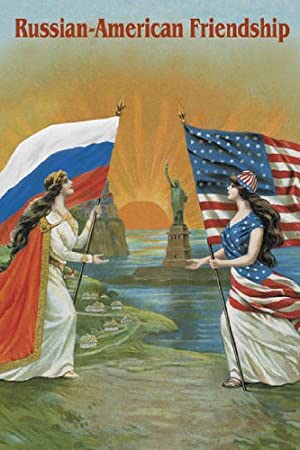 Russian and American soul: A few words need to be stated here about the relations between Russia and the US, as these two nations are said to be the hope of the world, along with the UK. That would seem to be a faraway fantasy at the moment, but astrology and history affirm the fact of future cooperation between those two great nations. Firstly, both nations are seeking to express their respective Aquarian souls. As we move more and more into the Aquarian Age, those two souls will be increasingly drawn out, with the 2nd ray expressing through that sign drawing those two nations into cooperation once again. Secondly, we aren’t told this in American history, but Russia and the US were on friendly terms until the Bolshevik Revolution in 1917.
Russian and American soul: A few words need to be stated here about the relations between Russia and the US, as these two nations are said to be the hope of the world, along with the UK. That would seem to be a faraway fantasy at the moment, but astrology and history affirm the fact of future cooperation between those two great nations. Firstly, both nations are seeking to express their respective Aquarian souls. As we move more and more into the Aquarian Age, those two souls will be increasingly drawn out, with the 2nd ray expressing through that sign drawing those two nations into cooperation once again. Secondly, we aren’t told this in American history, but Russia and the US were on friendly terms until the Bolshevik Revolution in 1917.
In fact, Russia supplied naval defences to the US during the Civil War, preventing Britain and France from intervening on the side of the Confederacy, thus preserving the union. Lincoln and the Russian Tsar Alexander II were on friendly terms and there was cooperation between Russian and American industrialists as Russia sought to modernize and increase its industrial output, starting with rail networks. Both men were later assassinated. As a sign of soul compatibility, too, both nations were liberating their slaves at the same time, in the 1860s – the blacks in the US and the serfs in Russia. Both nations issued their Emancipation Proclamations. And in terms of the liberating aspect of the 1st ray, 100 years later both nations started to work on liberating the world from the threat of nuclear annihilation, having come close to annihilating each other during the Cuban missile crisis. It was a period of history, though, through much of the 19th century, when America truly was ‘lighting the way’ for other nations, as many nations sought to emulate the American model of industrial capitalism, the latter being steadily dismantled in the US, starting after the end of WWI, and accelerated after WWII. And the point most worth mentioning is the economic model shared by all these nations emulating the United States at the time was one that worked against empire and instead toward cooperation. So what changed?
The door was opened again: We have all heard the saying, “Absolute power corrupts absolutely”. At the end of WWII, with the death of Roosevelt, the materialists in the US – many of the vested interests at the time – set about consolidating the gains made by the US at the outcome of the war, with control of half the world’s economic output. The CIA was created, the USSR was made an enemy instead of America’s main ally during the war against the Nazis, and the UK was made to give up its empire by Washington. Israel was created. In short, the US reigned supreme, except for the USSR. The differences in ideals between the US and the Soviets were made into a schism instead of an experiment in cooperation, and this on both sides of the fence. And perhaps more importantly for the United States, any hint of communist or socialist thought was purged and made anathema among the American public. The real ‘threat’ the Soviets represented was not military so much as it was idealistic, but it was turned into a vast military competition which brought the world to the brink of disaster in the early ‘60s. A reiteration of what happened then will come around again in 2022, shown in the Chinese 60-year cycle, this time with the US threatening Russia, having pulled out of the INF and soon the START treaty. The real reason we have our current tensions with Russia, China and any other nation that leans toward social policies and industrial capitalism is the threat that the American public might see the benefits of those other systems and start pressing for an end of the neoliberal system we now have in place. It is why we see no positive reporting on developments in those nations. All we hear is that they are weak and nearing collapse, which is quite opposite the truth.
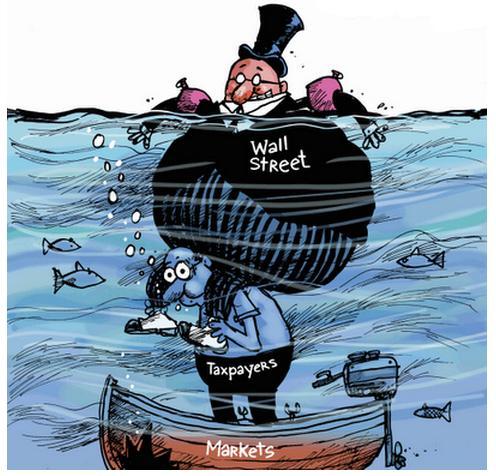 Financial vs. Industrial capitalism: Financial capitalism has weakened the West over time. It depends on deindustrialization, debt as a method of operation, which bears some parsing, and places the burden of debt onto industry and labor, funnelling wealth and thus power into the hands of the few. Prior to WWI, the main taxes that funded the government were tariffs and excise taxes. That changed markedly with the passage of the 16th Amendment and the Revenue Act of 1913, which allowed the government to levy income taxes on the general populace and opened the door for exploitation by the financiers. Initially, the greatest burden of tax was placed upon the wealthy. But that soon changed. Over the years the vested interests have wrangled with Congress to see their tax burden decreased. Without tariffs and excise taxes, and without the income from taxes on wealth, as in capital gains taxes, the government has been less and less able to fund social programs and its own running. The FIRE sector (Finance, Insurance and Real Estate) has won out over Main Street over the years, with the effect that rents and services have successively climbed upward, all the while real wages have stagnated. Usury costs (financing and interest payments) have crept up. Anyone who has a credit card knows the story.
Financial vs. Industrial capitalism: Financial capitalism has weakened the West over time. It depends on deindustrialization, debt as a method of operation, which bears some parsing, and places the burden of debt onto industry and labor, funnelling wealth and thus power into the hands of the few. Prior to WWI, the main taxes that funded the government were tariffs and excise taxes. That changed markedly with the passage of the 16th Amendment and the Revenue Act of 1913, which allowed the government to levy income taxes on the general populace and opened the door for exploitation by the financiers. Initially, the greatest burden of tax was placed upon the wealthy. But that soon changed. Over the years the vested interests have wrangled with Congress to see their tax burden decreased. Without tariffs and excise taxes, and without the income from taxes on wealth, as in capital gains taxes, the government has been less and less able to fund social programs and its own running. The FIRE sector (Finance, Insurance and Real Estate) has won out over Main Street over the years, with the effect that rents and services have successively climbed upward, all the while real wages have stagnated. Usury costs (financing and interest payments) have crept up. Anyone who has a credit card knows the story.
The West has reached the end of it 75 year expansion. It is to the point now that people find it very difficult to own a home outright, paying interest on the principle loan for 30 years or more. We pay the mortgage, the banks get richer, and property prices go up. It is often a sentence of debt-for-life, the danger being that all the payments made come to naught if you miss a few and your home is repossessed. This is what millions of people in the US are facing now. Biden will do little change that, and he will get the blame for it happening. In reality, his hands are tied by his donors – the vested interests. And they want to see that stock market soar. So long as the stock market (representing asset prices) is high, the capital gains are high, thus increasing the wealth of the 1%. And if you want a stark reminder of how much control over the government the vested interests have over the US, look at whom Trump has just pardoned and why. It is a regular rogue’s gallery. It is not difficult, with a little thought, to see what is coming for the West over the next few years, starting in the US and the UK. Now, if you want a real reality check, the Chinese, Russians, Iranians and most of the East are practicing the kind of capitalism America practiced prior to 1916. When it comes to the East, we need to take a cold shower and have a close look at how our nations are being run.
The real crisis this year has represented has not started yet. It will be a crisis of capital and labor, as forecast in the Bailey books.[8] Really, what we have across the planet now is a world divided into two sectors – the West under financial capitalism and the East under industrial capitalism. What we see happening in the UK and US nations today is the working out of the conflict between capital and labor, in effect between finance and industrialization. In terms, then, of what is facing us and our journey to get to the essence of what is taking place, especially when we look at emerging blocs, etc., we might consider the following:
 "When this vision of the new world order has been grasped by the men and women of goodwill throughout the nations, and has become part of the life and mind of every disciple and aspirant, then the next step will be to study the factors which are hindering its materialisation. For this a broad tolerance and an unprejudiced mind are essential, and these qualities are rare in the average student and the small town man. Past national mistakes must be faced; selfishness in the spheres of both capital and labour must be recognised; blindness, nationalistic ambitions, adherence to ancient territorial demands and assumed rights, inherited possessiveness, the refusal to relinquish past gains, disturbances in the religious and social areas of consciousness, uncertainty as to the realities of subjective and spiritual life, and the insincerities which are based on glamour and fear—all these factors are woven into the life pattern of every nation, without exception, and are exploited by the evil forces and evaded by the well-meaning but weak people of the world. These must all be seen in their true perspective. The eyes of the people who seek to work under the Forces of Light must be lifted from the world of effects into the realm of causes; there must be appreciation of the factors which have made and conditioned the modern world, and these predisposing factors must be recognised for what they are. This sizing up of the situation and this recognition of blame and responsibility must preface every attempt to bring down into active being the new world order."
"When this vision of the new world order has been grasped by the men and women of goodwill throughout the nations, and has become part of the life and mind of every disciple and aspirant, then the next step will be to study the factors which are hindering its materialisation. For this a broad tolerance and an unprejudiced mind are essential, and these qualities are rare in the average student and the small town man. Past national mistakes must be faced; selfishness in the spheres of both capital and labour must be recognised; blindness, nationalistic ambitions, adherence to ancient territorial demands and assumed rights, inherited possessiveness, the refusal to relinquish past gains, disturbances in the religious and social areas of consciousness, uncertainty as to the realities of subjective and spiritual life, and the insincerities which are based on glamour and fear—all these factors are woven into the life pattern of every nation, without exception, and are exploited by the evil forces and evaded by the well-meaning but weak people of the world. These must all be seen in their true perspective. The eyes of the people who seek to work under the Forces of Light must be lifted from the world of effects into the realm of causes; there must be appreciation of the factors which have made and conditioned the modern world, and these predisposing factors must be recognised for what they are. This sizing up of the situation and this recognition of blame and responsibility must preface every attempt to bring down into active being the new world order."
A look ahead: Speaking of the world of causes, we have heard much by now and looked at the year 2025 many times and what it might mean. We know the world is in a great crisis at the moment, engineered to a large degree across the West. It is not so in the East to any great degree. Now, moving into this decade, the decision to be made about the reappearance of the Kingdom of Souls on the Earth will depend on what happens in the next few years. The East is stabilizing. The West must make some existential decisions. This is probably not overstating the fact. Yes, we do have the power on Main Street to effect the needed changes. But do we have the will? There is the problem. So often, people who mean well and see the issues more or less clearly are generally more passive. That’s a major hindrance. If, for instance, we want to see a return to the industrial capitalism that made the West and especially the US a great world power, then the labor must organize, get out amongst the people and offer a viable alternative to the establishment politics of the day. The people across the West want to see these more left-leaning policies enacted. Note we are not talking about communism or socialism here, but that is how those policies will be cast. What we are really looking at is the return of taxes on unearned income, like we had prior to 1916 (note the 1915 median date). That unearned income is things like interest, rental income above a certain amount, finance charges and so forth. It would be a return to sensible capitalism for the West, one which has benefits for all instead of the few. One can still be rich, but it would be so in a more ethical manner. This, the vested interests will fight tooth and nail. And the battle is about to become quite intense. What can be done to offset it?
From everything I have read, there are some big issues that need to be resolved across the West. Financial capitalism tends toward monopolization when industry is placed in private hands. Those monopolies need to be broken up. We are talking here of the tech companies (Facebook, Google, etc.) and the mainstream media. Reintroducing media competition will go a good ways toward dissipating the propaganda we now get as news. It would give people a much wider range of views. The same would hold true of the Big Agribusiness, Big Energy and Big Pharma industries, bringing food standards back up, drug prices down and energy prices down, too. Breaking up the media and tech companies would also have the added effect of offsetting censorship. If the vested interests no longer have overarching control over information, then light can begin to appear through the fog. In my view, this would need to be one of the first things to happen if we are to return to any sort of a positive discourse and change of direction in the US. It is much the same in the UK. One of the biggest problems we have in the West and why we seem to keep going around in circles is because we do not get good or adequate information through the media on the issues that really impact our lives, and that is by design. That goes back to the statement made earlier about how much of the preceding will seem conspiratorial or untrue if one gets one’s news from mainstream media. That media plays to our prejudices and fears all the time.
Yes, there will be a conflict in the next few years, but if all goes well that conflict will be within our borders and not against a foreign state. Trump was correct when he said we needed to end the endless wars, to bring industry back to America and so forth, and that ‘the swamp’ needed to be drained. If progressive wealth taxes are reintroduced that will begin to unblock the drain. If media competition is reintroduced, then we will start to see real journalism again, because the outlets will then be vying to get the latest scoop instead of parroting each other. If big money is removed from politics, then perhaps the voice of the people will be heard again. These are the sorts of changes we need if the ‘great suffering’ forecast for the United States is to be offset. These issues will be to the forefront in the West in the immediate years ahead. That said, what can we expect to see around 2025, after the pandemic has passed and the economy has begun to sort itself out?
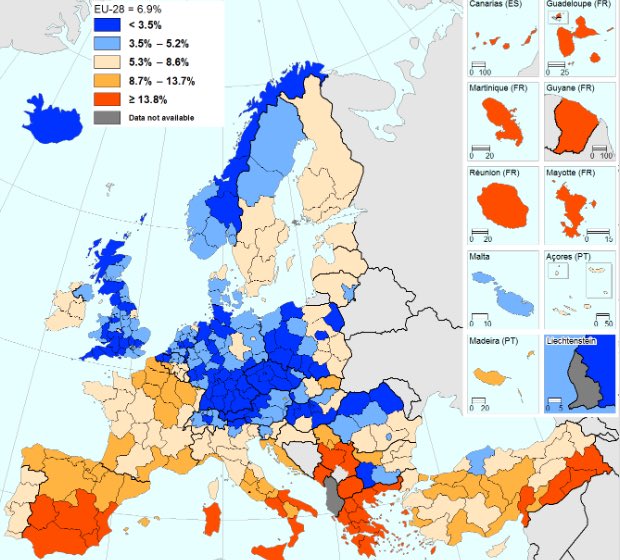 The Great Conjunction: At the start of this year the Saturn/Pluto conjunction signalled the crisis we are having now, as well as the ending of the old order. That is plain enough to see. With every ending there is also a beginning. The ending doesn’t mean an end of various societies that try to hang on to the past. It simply means their influence will recede to a greater of lesser extent and new powers and spheres of influence will arise. The US will be tending to its own internal problems, of necessity, as will the UK. Europe, too, will be facing its own crisis, as in the EU proper. Brexit has already signalled that, but the problems go far deeper. Events such as the Greek debt crisis, the refugee crisis (which the US and UK did much to provoke) and the crisis in Ukraine, which is actually approximating a civil war have all brought up deep questioning within the bloc, as well as causing the re-emergence of ancient hatreds and resentments between and within nations. And then one sees insurgencies within the bloc by Poland, Hungary, the Netherlands and the UK against the EU. Referring back to the quote about emerging blocs, the next one we will likely see emerging is along the north-south divide within the EU. It is not as unlikely as one might think, and may actually be desirable in the long term. The Club Med states, which would form the southern bloc of Europe, look more favourably on the East and are more simpatico in their cultures than they are with northern Europe. In the immediate years ahead, leading up to 2025, the Ukraine will have to be addressed. It is a collapsing society and has its own internal split, with Nazism having come to the surface there in the western part, the eastern part being more sympathetic to Russia. That collapse was directly engineered by the US, and was Joe Biden’s baby. This leads us to the Great Conjunction and what that will mean for the future.
The Great Conjunction: At the start of this year the Saturn/Pluto conjunction signalled the crisis we are having now, as well as the ending of the old order. That is plain enough to see. With every ending there is also a beginning. The ending doesn’t mean an end of various societies that try to hang on to the past. It simply means their influence will recede to a greater of lesser extent and new powers and spheres of influence will arise. The US will be tending to its own internal problems, of necessity, as will the UK. Europe, too, will be facing its own crisis, as in the EU proper. Brexit has already signalled that, but the problems go far deeper. Events such as the Greek debt crisis, the refugee crisis (which the US and UK did much to provoke) and the crisis in Ukraine, which is actually approximating a civil war have all brought up deep questioning within the bloc, as well as causing the re-emergence of ancient hatreds and resentments between and within nations. And then one sees insurgencies within the bloc by Poland, Hungary, the Netherlands and the UK against the EU. Referring back to the quote about emerging blocs, the next one we will likely see emerging is along the north-south divide within the EU. It is not as unlikely as one might think, and may actually be desirable in the long term. The Club Med states, which would form the southern bloc of Europe, look more favourably on the East and are more simpatico in their cultures than they are with northern Europe. In the immediate years ahead, leading up to 2025, the Ukraine will have to be addressed. It is a collapsing society and has its own internal split, with Nazism having come to the surface there in the western part, the eastern part being more sympathetic to Russia. That collapse was directly engineered by the US, and was Joe Biden’s baby. This leads us to the Great Conjunction and what that will mean for the future.
There is a basic outline of the Great Conjunction on the blog site, which will give the background. The mundane meaning in terms of geopolitics will revolve around the clear emergence of the cooperative blocs outlined in the quote preceding. Aquarius is about cooperative, group effort. The Eastern bloc would appear to be unstoppable now, much as Western powers may try to interfere with it. Great Conjunctions work out slowly over the 20-year period they represent. With all we have investigated thus far in this letter we can probably safely say the world will not be all peace, light and brotherhood by 2025. That is just fanciful thinking. The dispensation that came out in 1925 was in a world period where the World War was still being fought, for all intents and purposes, where polarization was strong and when regional powers were rising and challenging the peace that was signed onto at the end of the first phase of that war in the 1910s. A quick look back at the 25-year mark in the last century shows the world was less than settled. Yet, great light was cast on many areas of human life. As a result, great darkness was arising, too, in parallel. It is always thus. The light seems to magnify the dark. That is part of what we are seeing now, by the way. The light is impending on us, and is resulting in a magnification of all that needs to be addressed within our respective societies.
2025 and dispensations: As to the dispensations of the Ageless Wisdom that are supposed to begin coming at around that 2025 median date, we can probably know with certainty that they will not come via a single source, as in an Alice Bailey or Helena Blavatsky. It was not so in 1925, and nor should we expect it will be so in 2025. There were several dispensations then, across many areas. The revelations that went on to become quantum mechanics were along their line as great a dispensation as was Roerich’s or Bailey’s work, for example, showing us matter is space-like and can be perceived either as particulate or wave-like, confirming ancient wisdom. And we should no doubt expect there will be opposition to and detractors against such dispensations, too. There was strong reaction to Alice Bailey’s work among some Theosophists, for instance. Every group seems to have its own vested interests, of a sort. So, there is a caution in whatever begins to come out: If we are very attached to our teachings, these new dispensations may not initially be perceived for what they are and instead be seen as false or questionable. It will take time to verify the truth in these things.
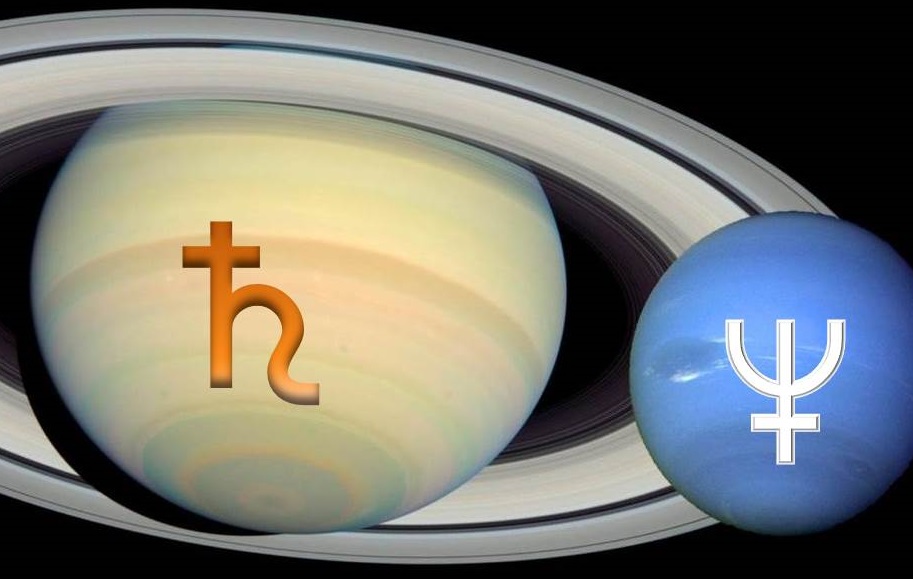 There is one more item to put forward before we close this summation out. In 2026 there is a synodic conjunction of Saturn and Neptune at zero degrees of Aries. For this particular conjunction to occur on an Aries point (zero degrees of cardinal signs) is very rare. The last time was in 1738 at 0° Cancer. There had been none such in the 2331 years prior. There will be another one at 0° Capricorn in 2312. Conjunctions on Aries points, like eclipses to the same, mark changes in our world view. The most basic meaning of the Saturn/Neptune conjunction is the contrast between ideals and realities, or the melding of the same. It can mark the implementation of ideals or preventing ideals from becoming reality. That conjunction will strongly affect the United States. It will fall on the US IC, which will mark changes in real estate, opposition parties, the end of situations, the environment and the rentier class. If we had to look for a single marker for a big change in the US, this would be it, and will probably mark the end of financial capitalism there. That particular conjunction has associations with the rise and fall of communism and ideologies. As such, this conjunction in this particular world period marks the struggle between idealistic and materialistic tendencies. There are few communist states any longer, only four – China, Cuba, Laos and Vietnam – and of those, China may be run by a single party, but it is not really communist as to its economy. It is running on a form of industrial capitalism – a mixed economy. The main idealistic struggle these days is between progressives and the false libertarians in Western nations. In the meantime, Wisner’s Mighty Wurlitzer will keep cranking out its baleful and alarming tunes across the West.
There is one more item to put forward before we close this summation out. In 2026 there is a synodic conjunction of Saturn and Neptune at zero degrees of Aries. For this particular conjunction to occur on an Aries point (zero degrees of cardinal signs) is very rare. The last time was in 1738 at 0° Cancer. There had been none such in the 2331 years prior. There will be another one at 0° Capricorn in 2312. Conjunctions on Aries points, like eclipses to the same, mark changes in our world view. The most basic meaning of the Saturn/Neptune conjunction is the contrast between ideals and realities, or the melding of the same. It can mark the implementation of ideals or preventing ideals from becoming reality. That conjunction will strongly affect the United States. It will fall on the US IC, which will mark changes in real estate, opposition parties, the end of situations, the environment and the rentier class. If we had to look for a single marker for a big change in the US, this would be it, and will probably mark the end of financial capitalism there. That particular conjunction has associations with the rise and fall of communism and ideologies. As such, this conjunction in this particular world period marks the struggle between idealistic and materialistic tendencies. There are few communist states any longer, only four – China, Cuba, Laos and Vietnam – and of those, China may be run by a single party, but it is not really communist as to its economy. It is running on a form of industrial capitalism – a mixed economy. The main idealistic struggle these days is between progressives and the false libertarians in Western nations. In the meantime, Wisner’s Mighty Wurlitzer will keep cranking out its baleful and alarming tunes across the West.
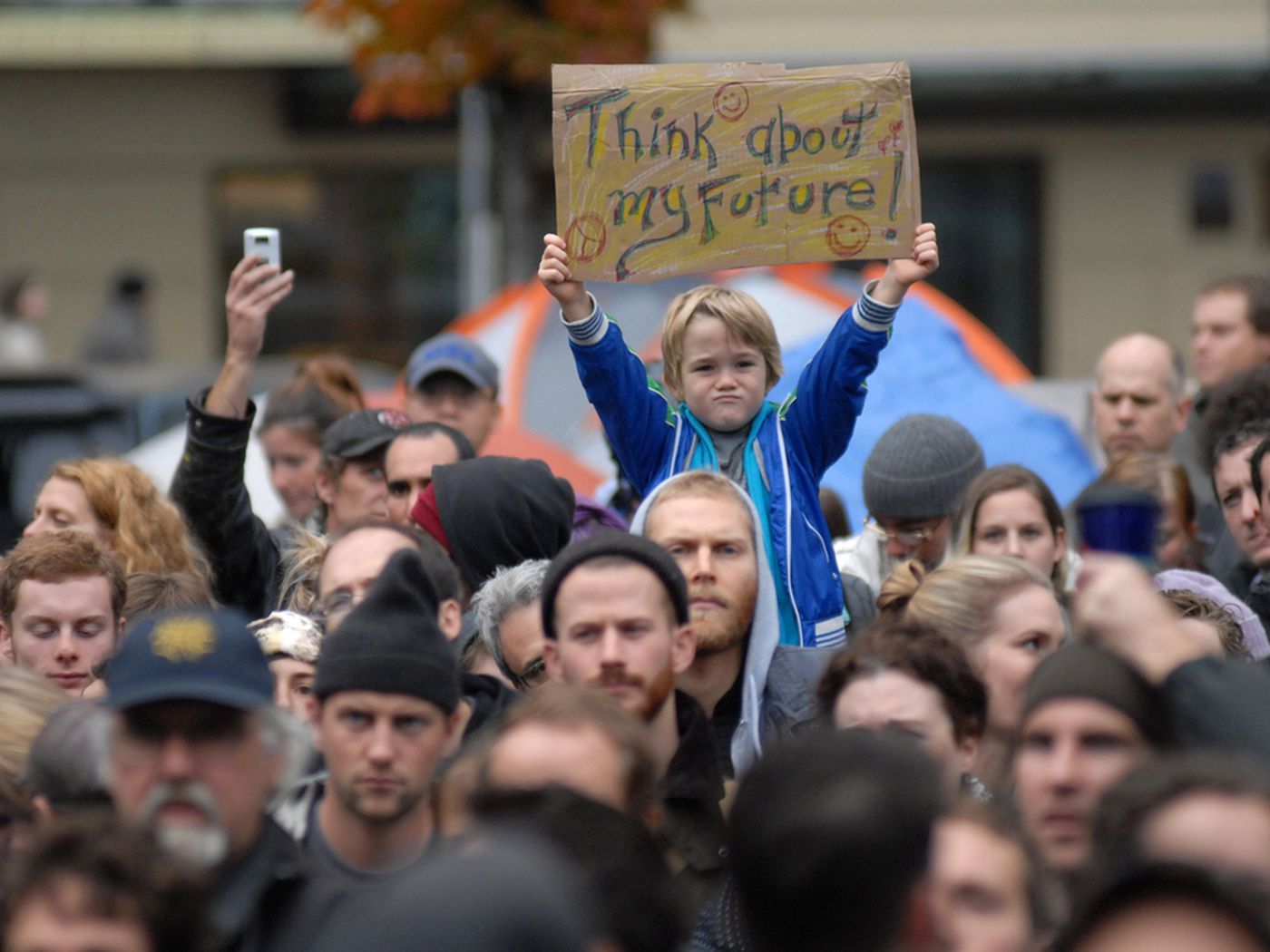 Keep heart and will: The end message here?: Keep heart. Despite all the missteps of our leaders, the world is evolving to a plan. It is difficult to see without digging beneath all the misinformation with which we are presented, and it will take time to manifest. Over the next 20 years all of our group relations – alliances, our own group relations, groups within our societies – will come under increasing review and readjustment. 2026 will mark another shift and ideals will then come under increased scrutiny, and probably with some pioneering new initiatives set in place. We hold the thought that these will precipitate and will be in the public’s interests, devolving power and influence from the hands of the few. The latter is, after all, more in accordance with Aquarian views. The world will be increasingly restive in the immediate years ahead, but thereafter the energies will settle, becoming a gentler rhythm after 2025, as forecast with the incoming 4th ray. To that, we look forward, so long as that gentler rhythm is not dystopic. The Western world will see dramatic changes over that time, for the most part across this decade. These changes are to be anticipated and welcomed. But to ensure their success for the greater good, the people of goodwill, growing by number daily, must organize and show political will. The latter is sorely lacking at the moment. Perhaps we need crises such as we had this year and will have next year will draw that out. It has happened before and in will happen again. The tendency is always for the human spirit to triumph and for light to prevail over darkness. I see no reason for that to change. In fact, we can expect that to increase. We’ll keep track of that in the letters to come in the years ahead. In the meantime, here is wishing you all a happier 2021, and thanks for subscribing over these years. The journey continues, and together we will rise above the fray.
Keep heart and will: The end message here?: Keep heart. Despite all the missteps of our leaders, the world is evolving to a plan. It is difficult to see without digging beneath all the misinformation with which we are presented, and it will take time to manifest. Over the next 20 years all of our group relations – alliances, our own group relations, groups within our societies – will come under increasing review and readjustment. 2026 will mark another shift and ideals will then come under increased scrutiny, and probably with some pioneering new initiatives set in place. We hold the thought that these will precipitate and will be in the public’s interests, devolving power and influence from the hands of the few. The latter is, after all, more in accordance with Aquarian views. The world will be increasingly restive in the immediate years ahead, but thereafter the energies will settle, becoming a gentler rhythm after 2025, as forecast with the incoming 4th ray. To that, we look forward, so long as that gentler rhythm is not dystopic. The Western world will see dramatic changes over that time, for the most part across this decade. These changes are to be anticipated and welcomed. But to ensure their success for the greater good, the people of goodwill, growing by number daily, must organize and show political will. The latter is sorely lacking at the moment. Perhaps we need crises such as we had this year and will have next year will draw that out. It has happened before and in will happen again. The tendency is always for the human spirit to triumph and for light to prevail over darkness. I see no reason for that to change. In fact, we can expect that to increase. We’ll keep track of that in the letters to come in the years ahead. In the meantime, here is wishing you all a happier 2021, and thanks for subscribing over these years. The journey continues, and together we will rise above the fray.
These letters are sent as a service. If you wish to be added to or deleted from the mailing list, let me know. If you feel inspired, feel free to pass them along, but do so without charge or alteration.
[1] Bailey, The Destiny of the Nations, Lucis Publishing, NY, NY, p. 69
[2] Bailey, Esoteric Astrology, p. 169
[3] Ibid, p. 170
[4] Ibid, p. 174
[5] The author, The Full Moons: Topical Letters in Esoteric Astrology, Appendix 7, The Grounds Described
[6] Bailey, Alice A., A Treatise on White Magic, p. 409
[7] Bailey, The Externalisation of the Hierarchy, p. 200
[8] Bailey, Problems of Humanity, p. 26







